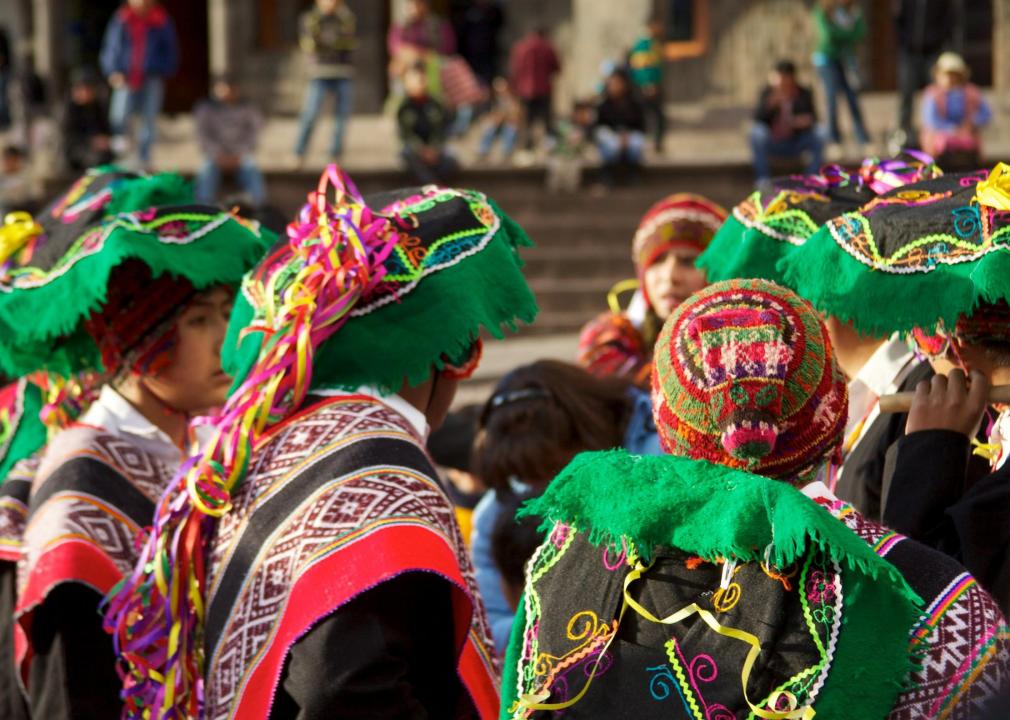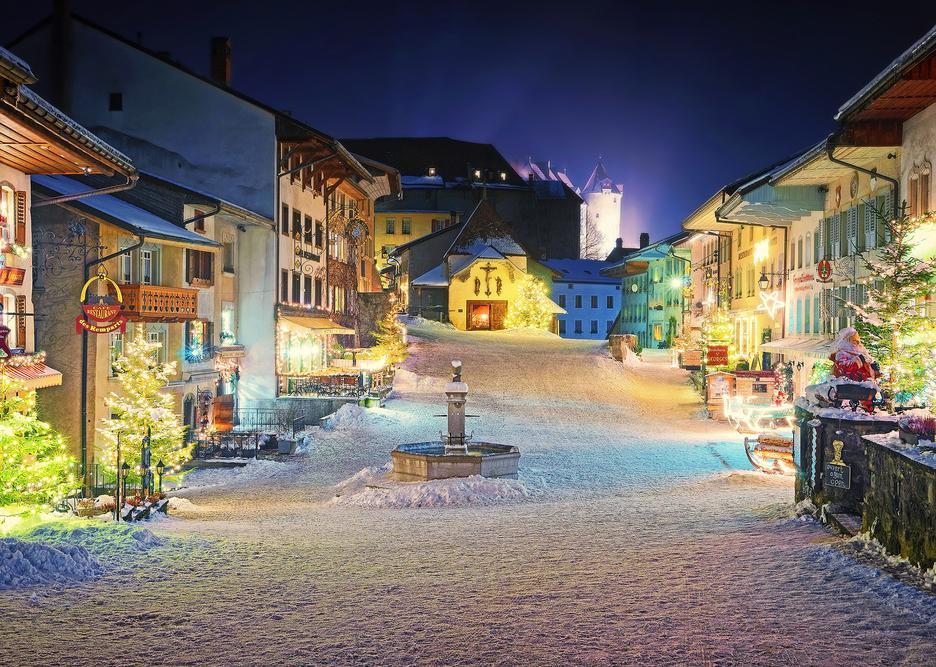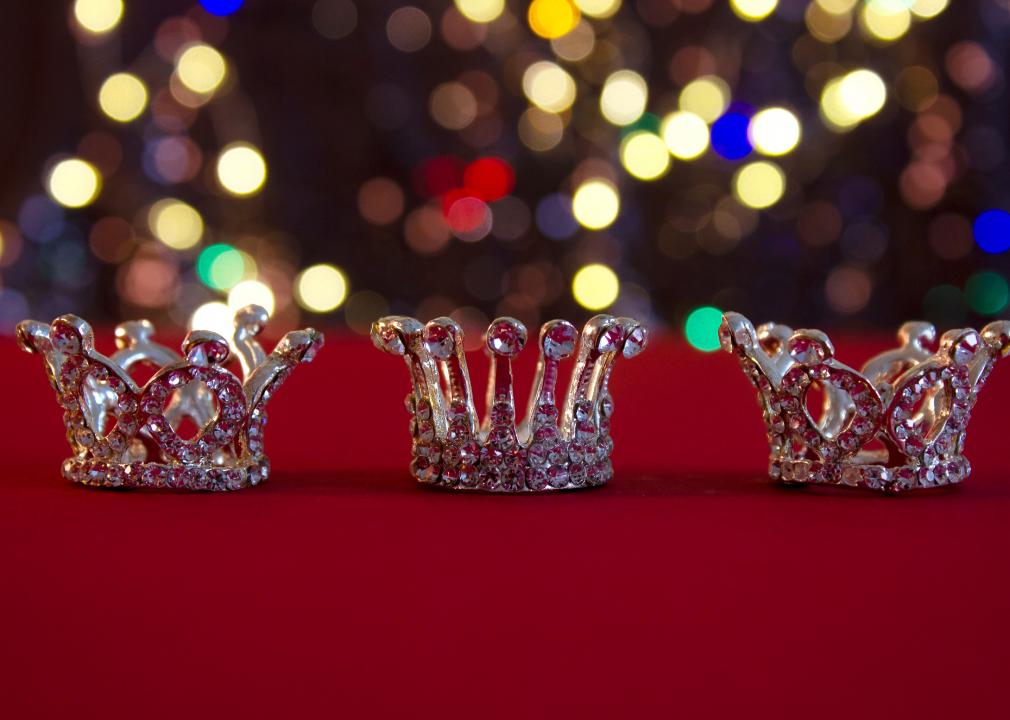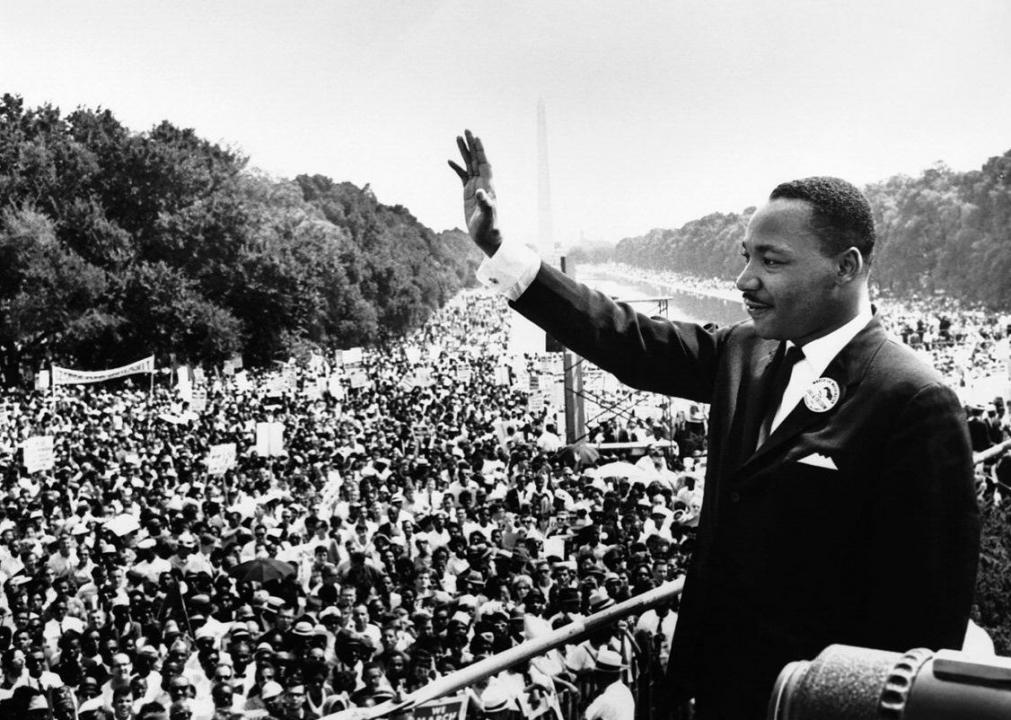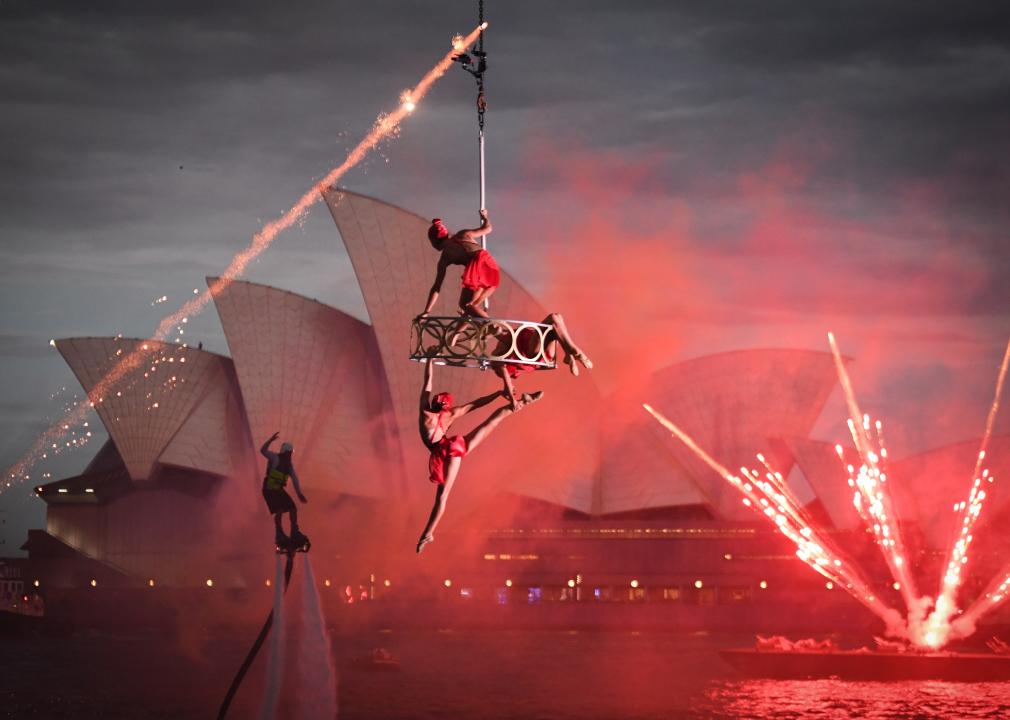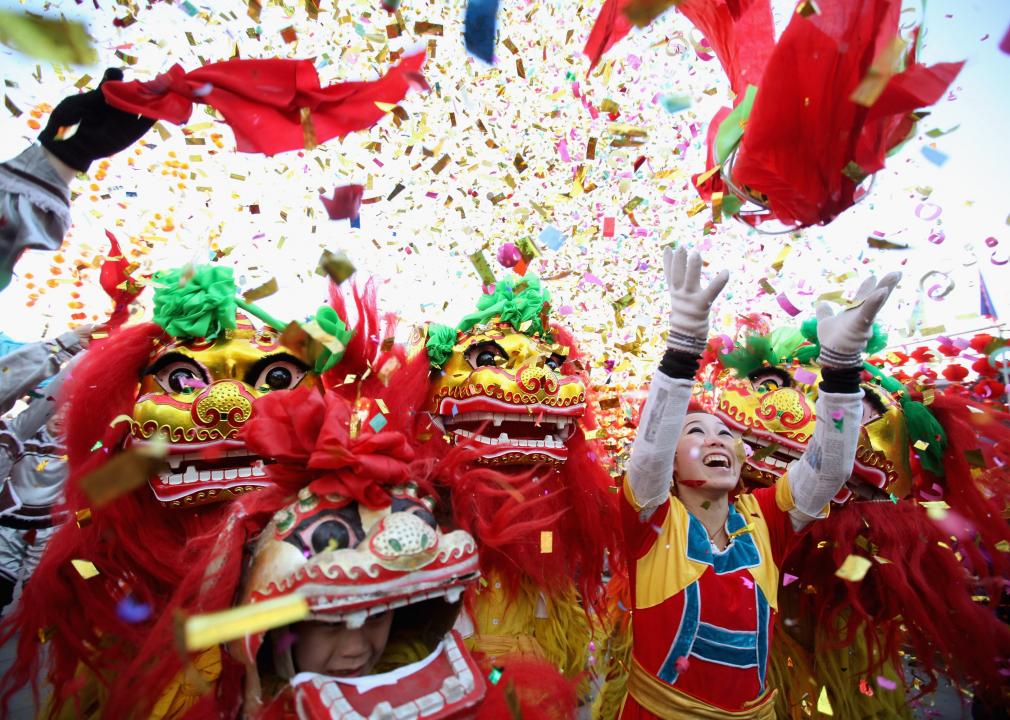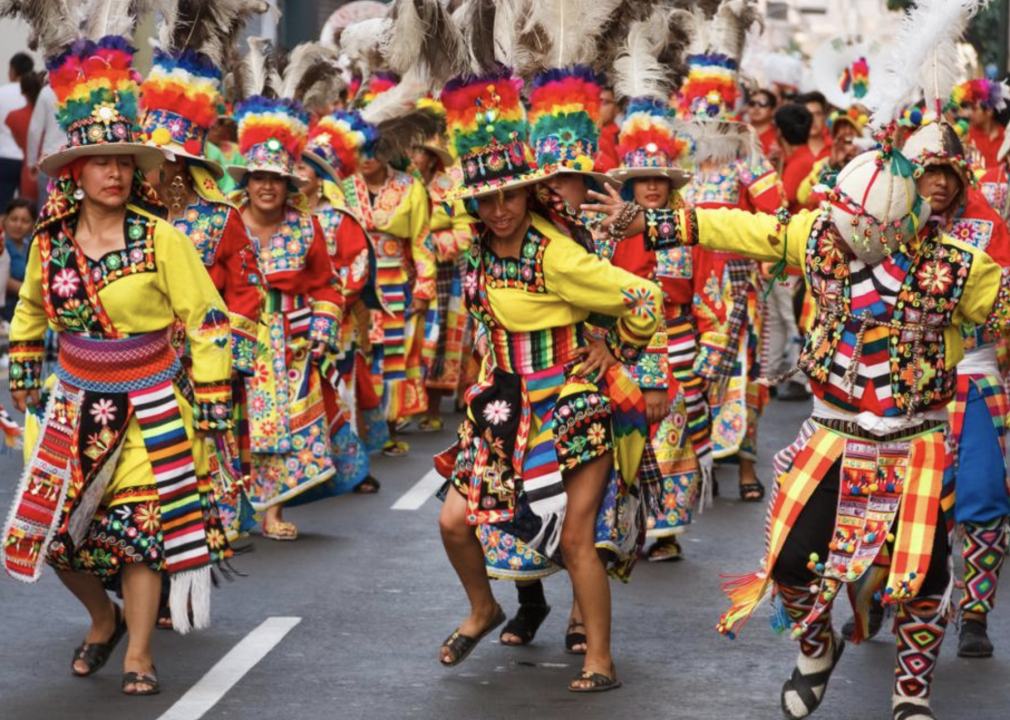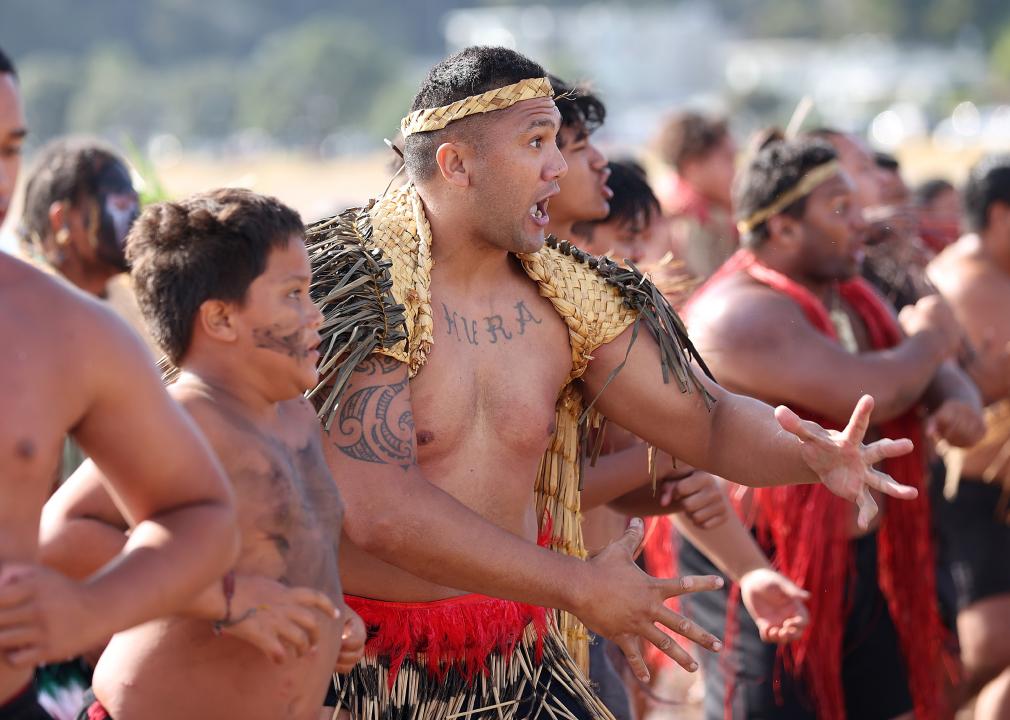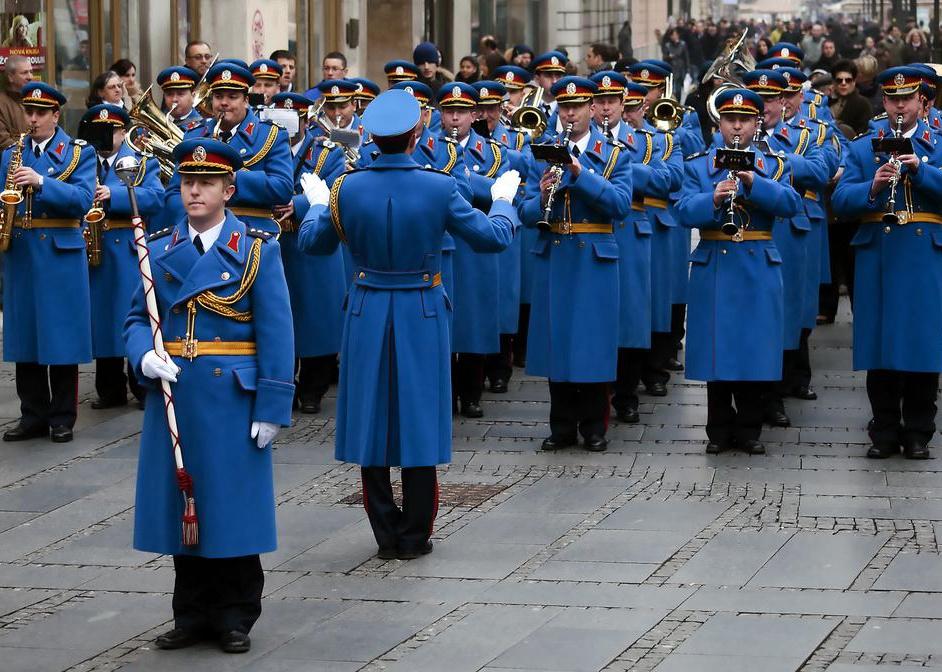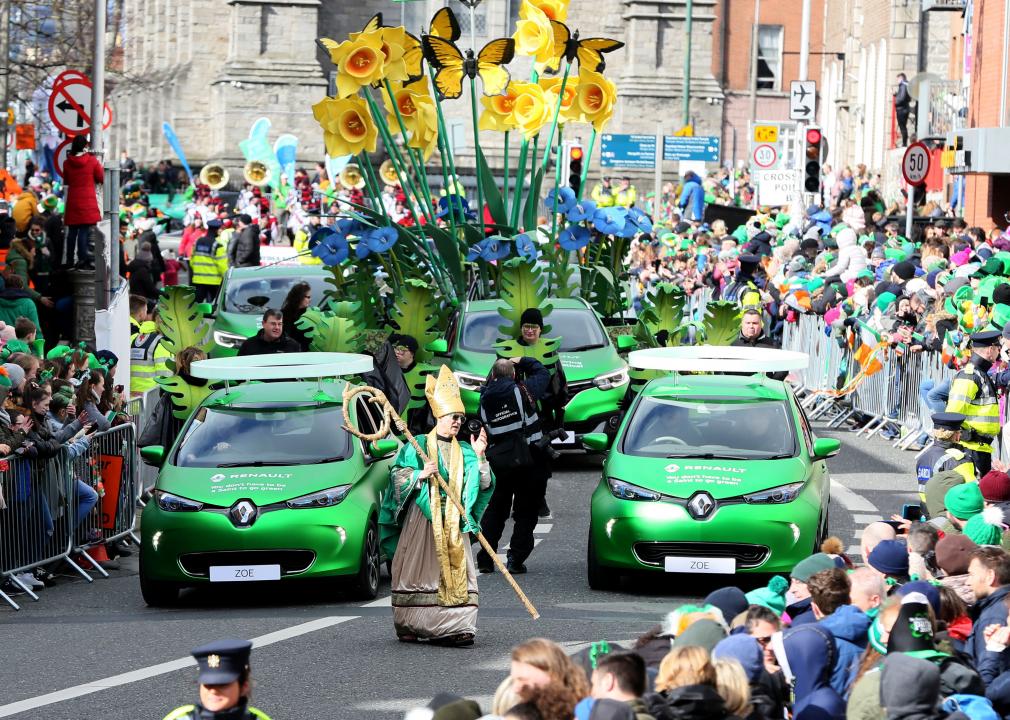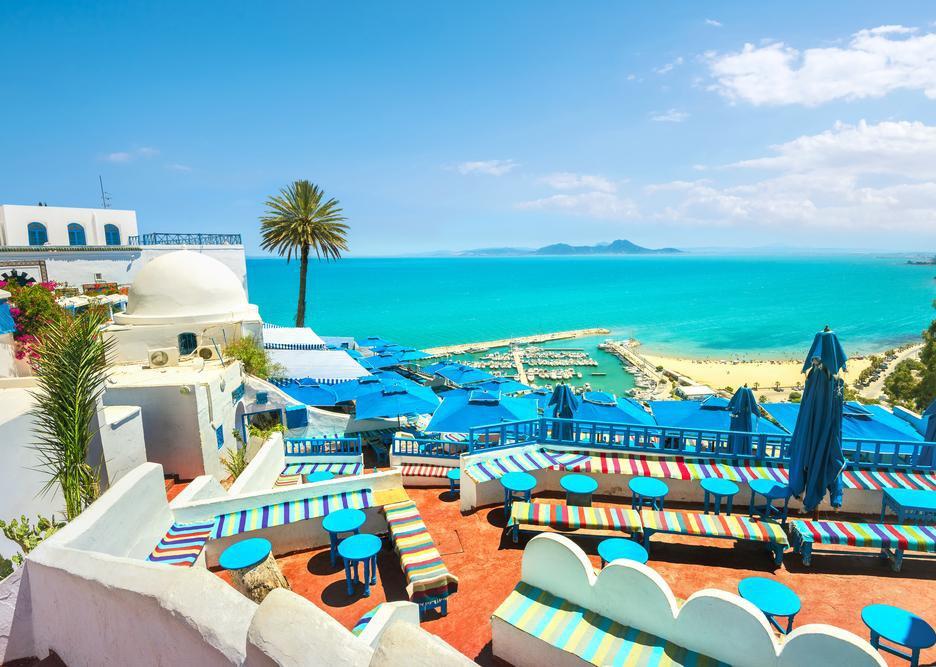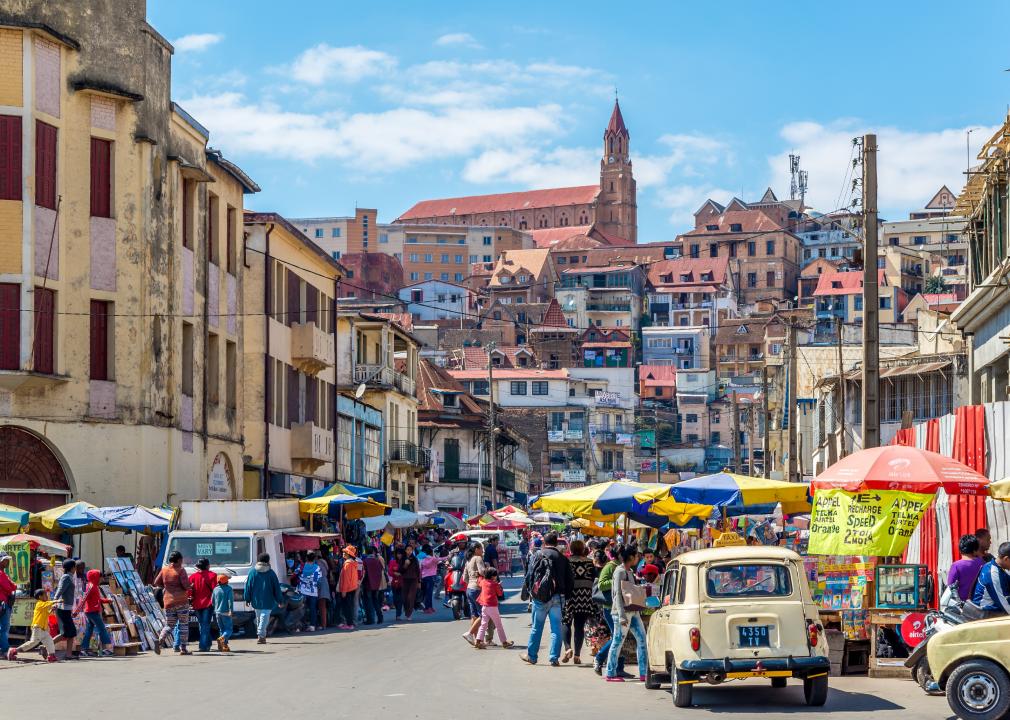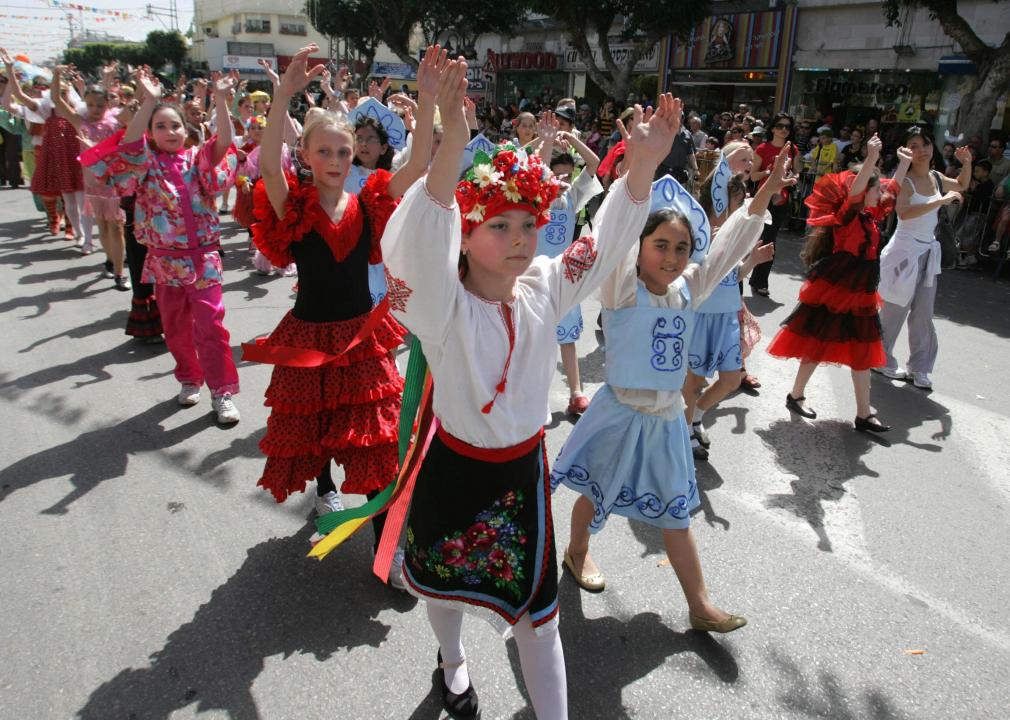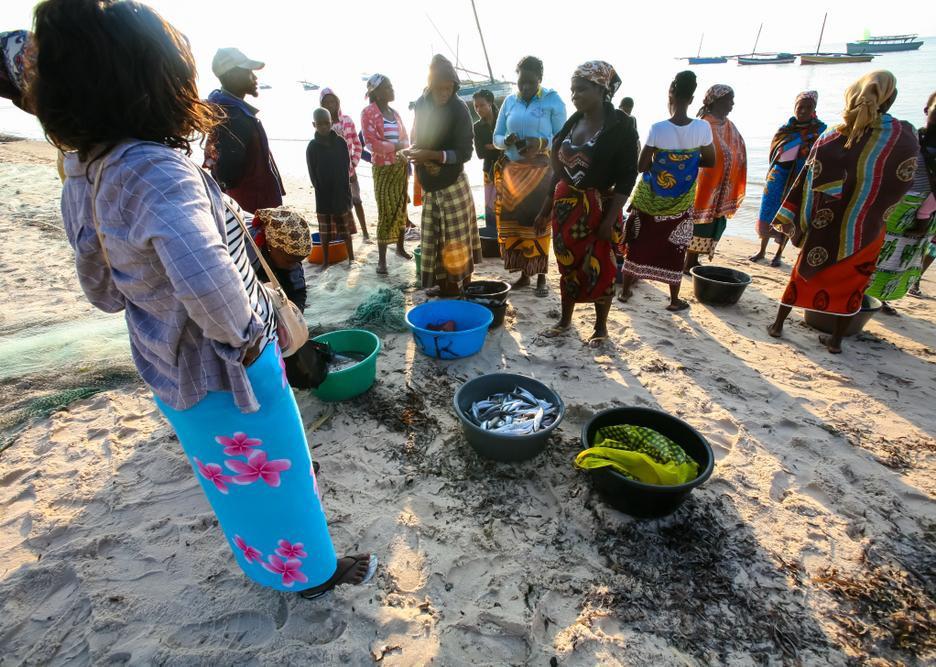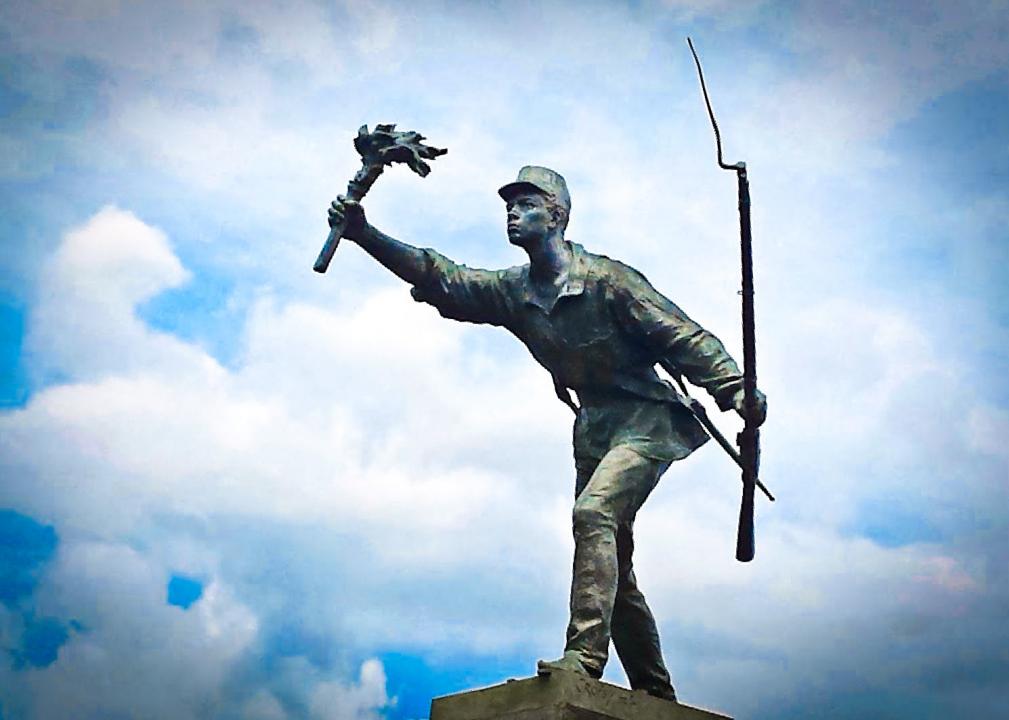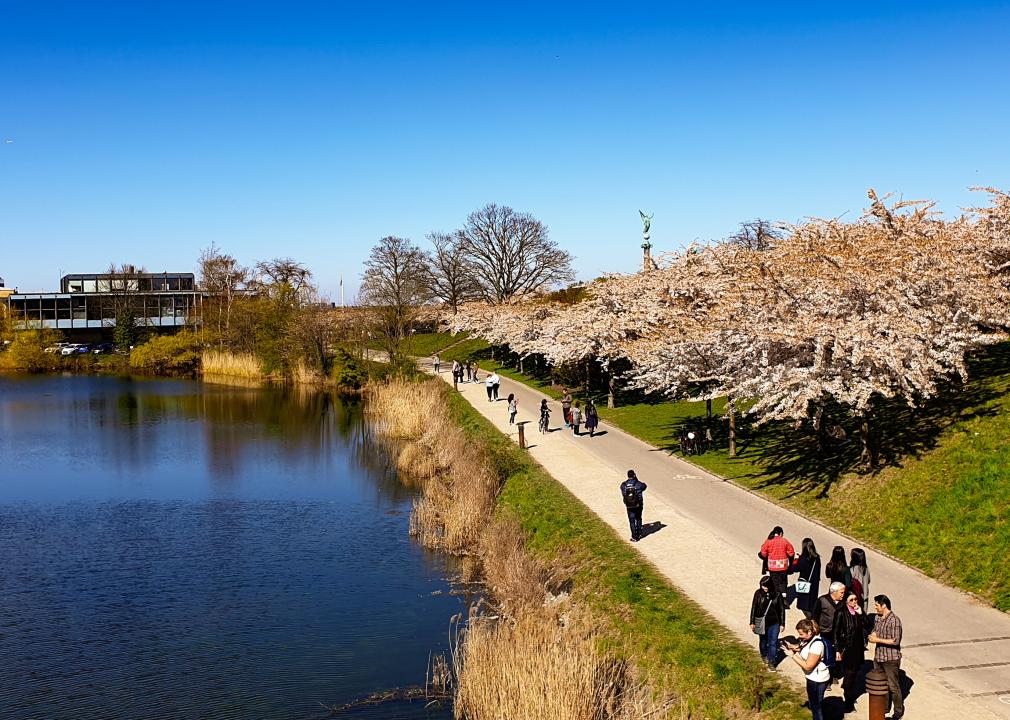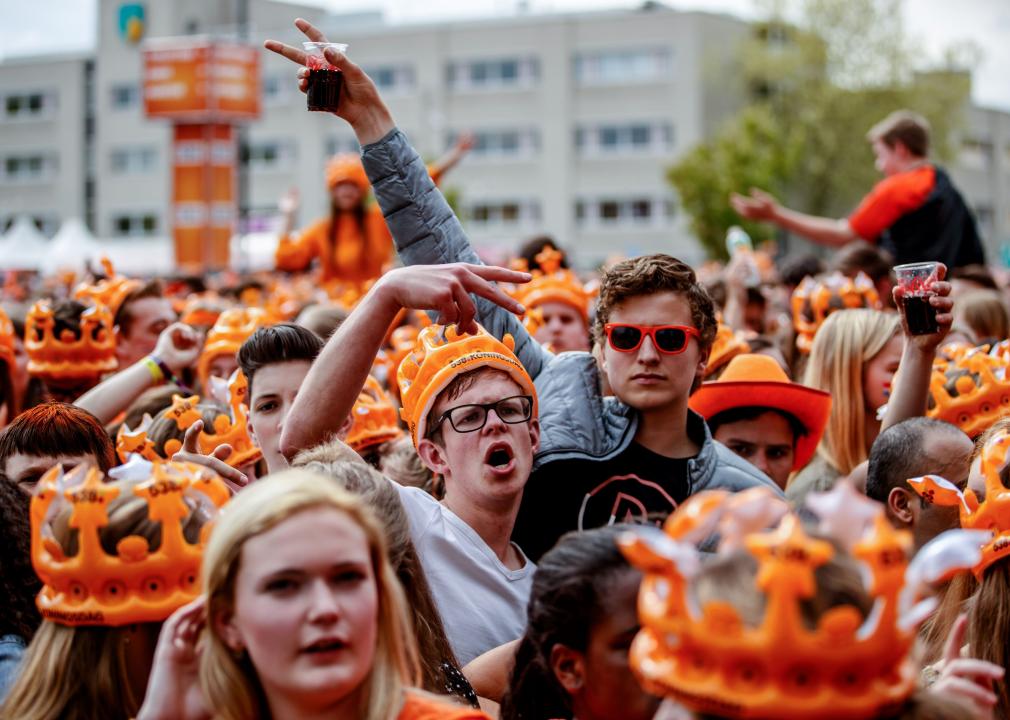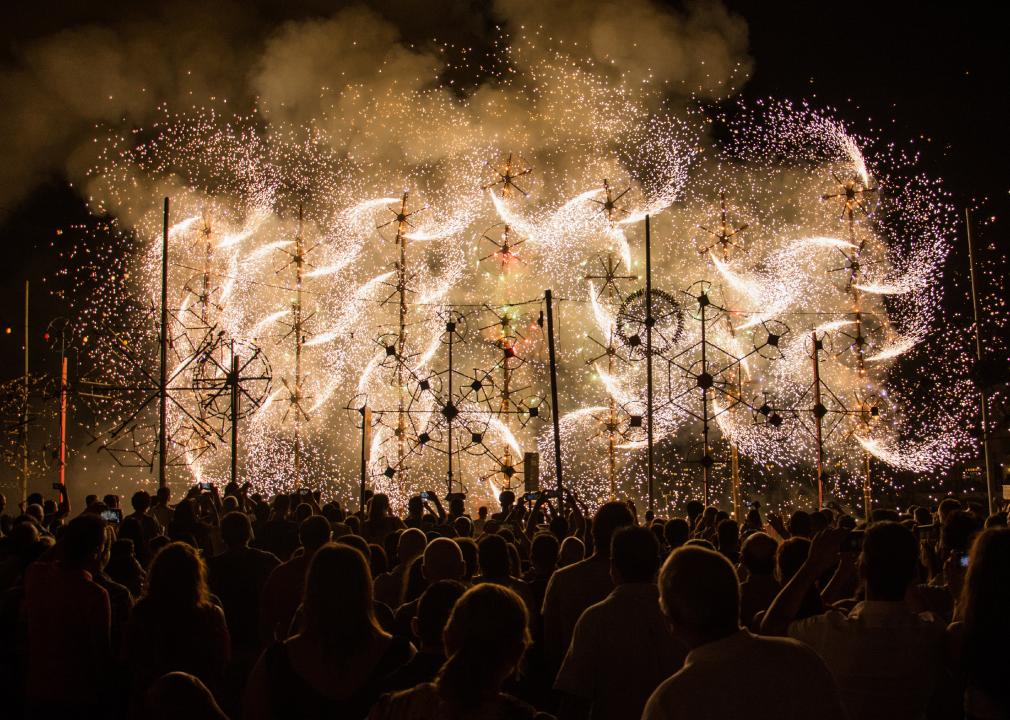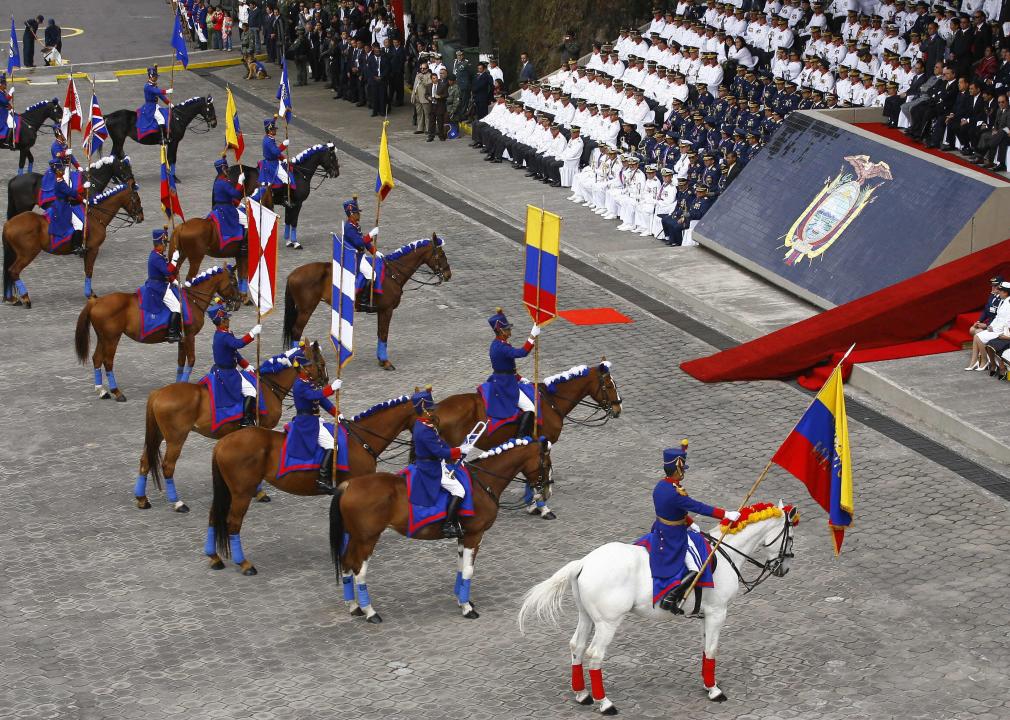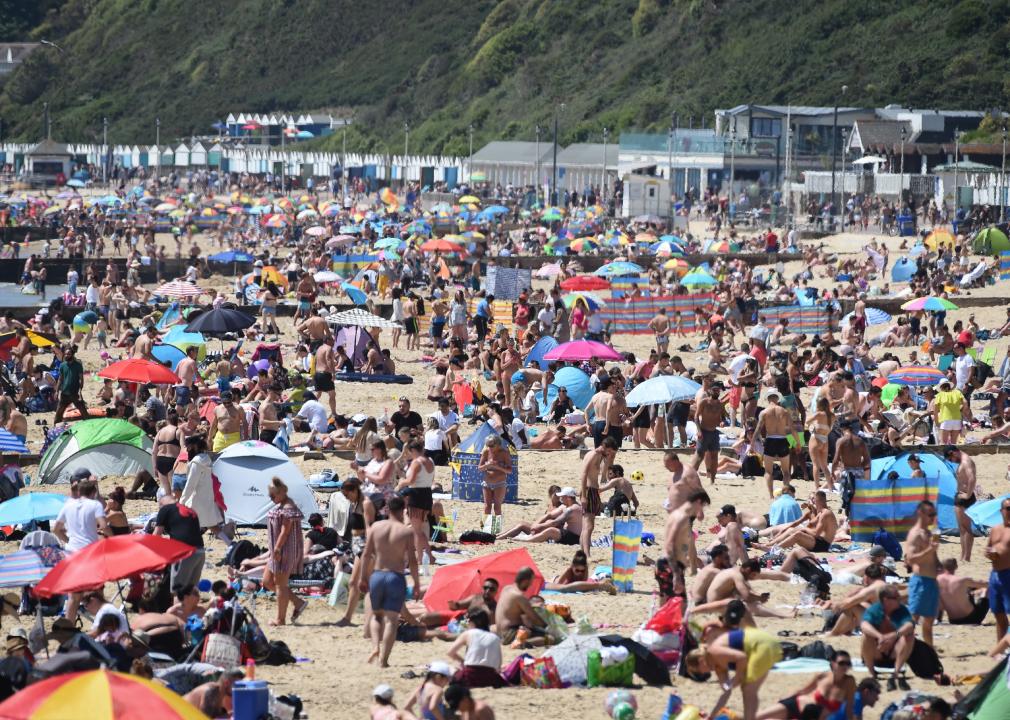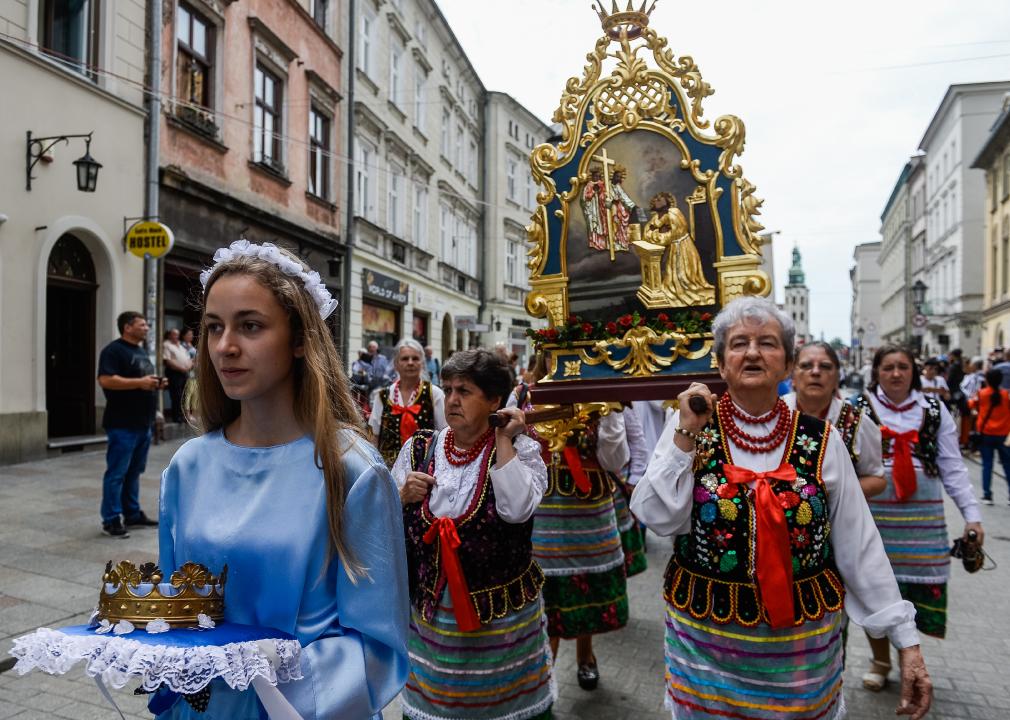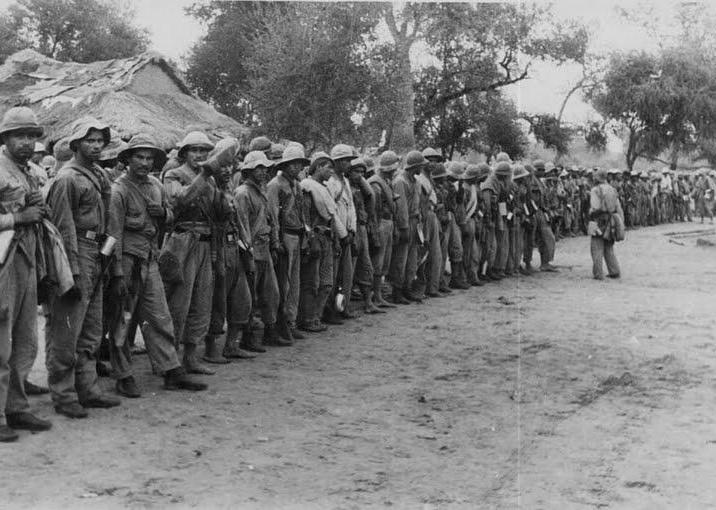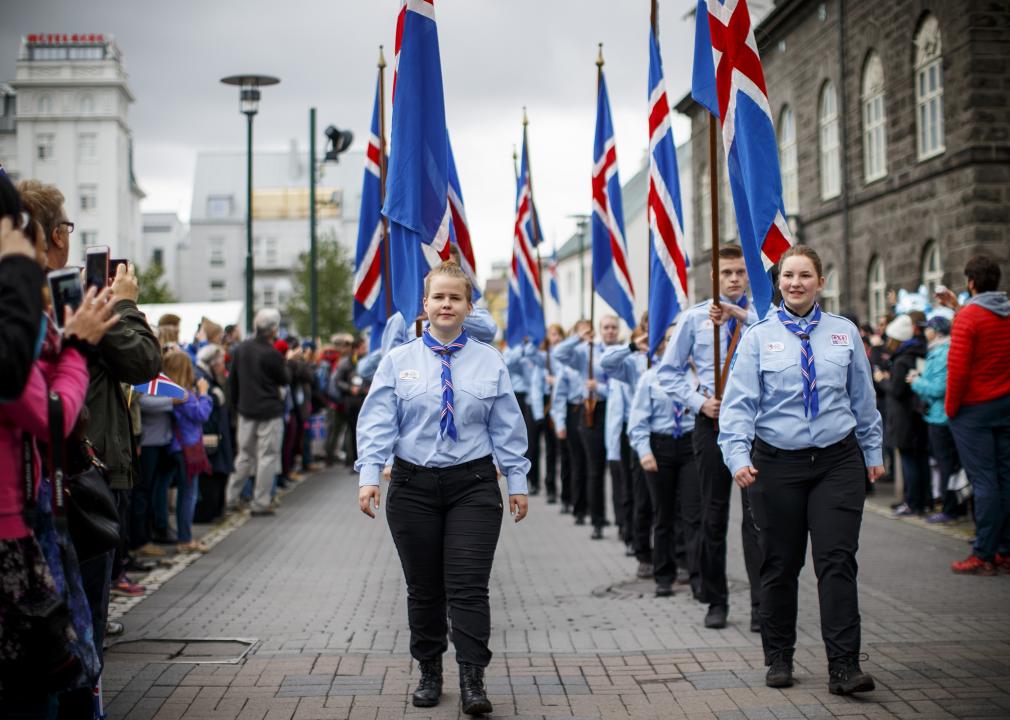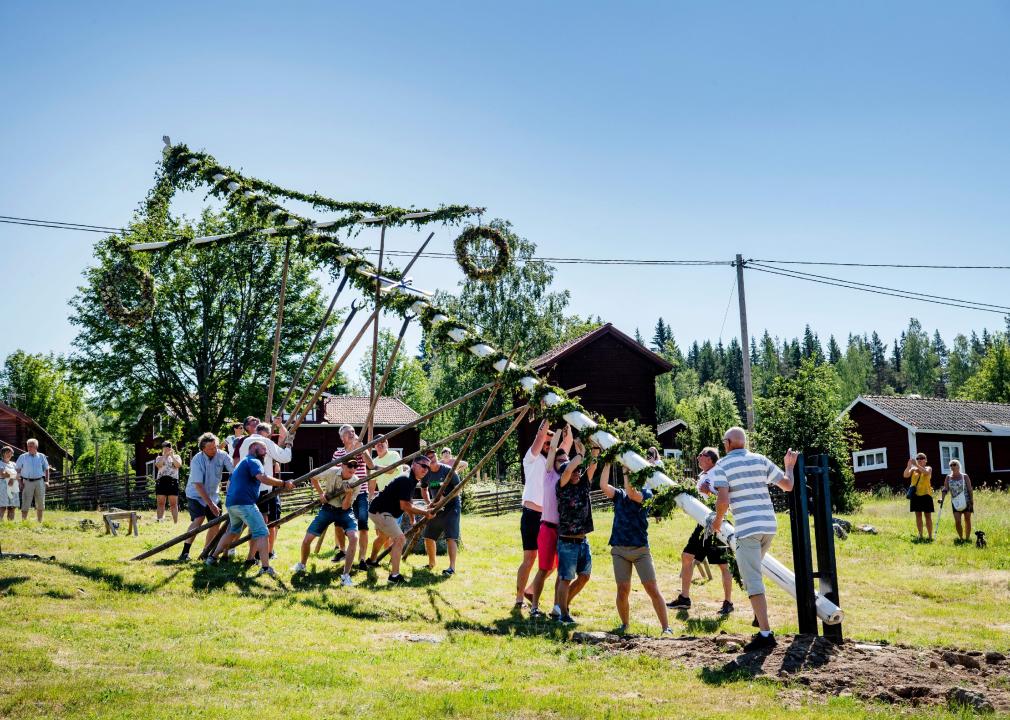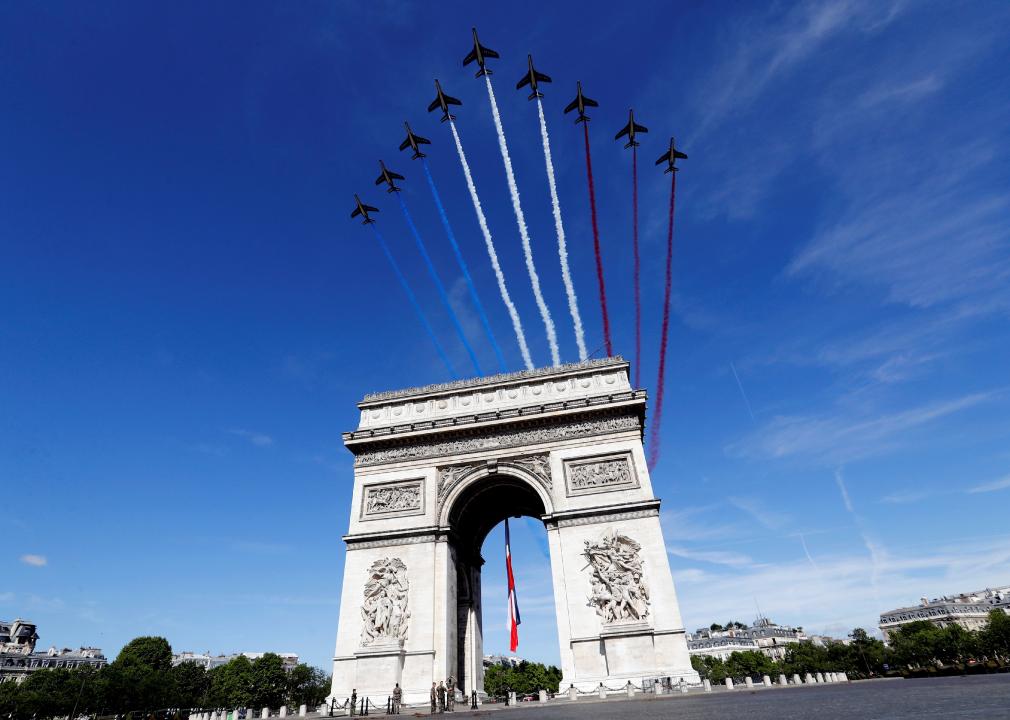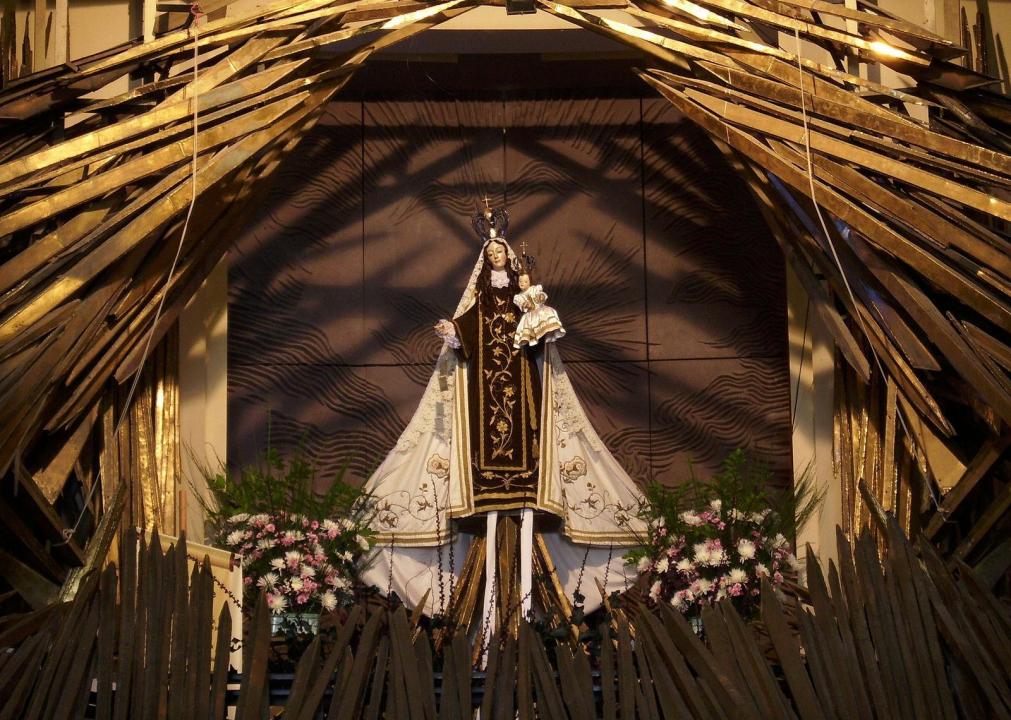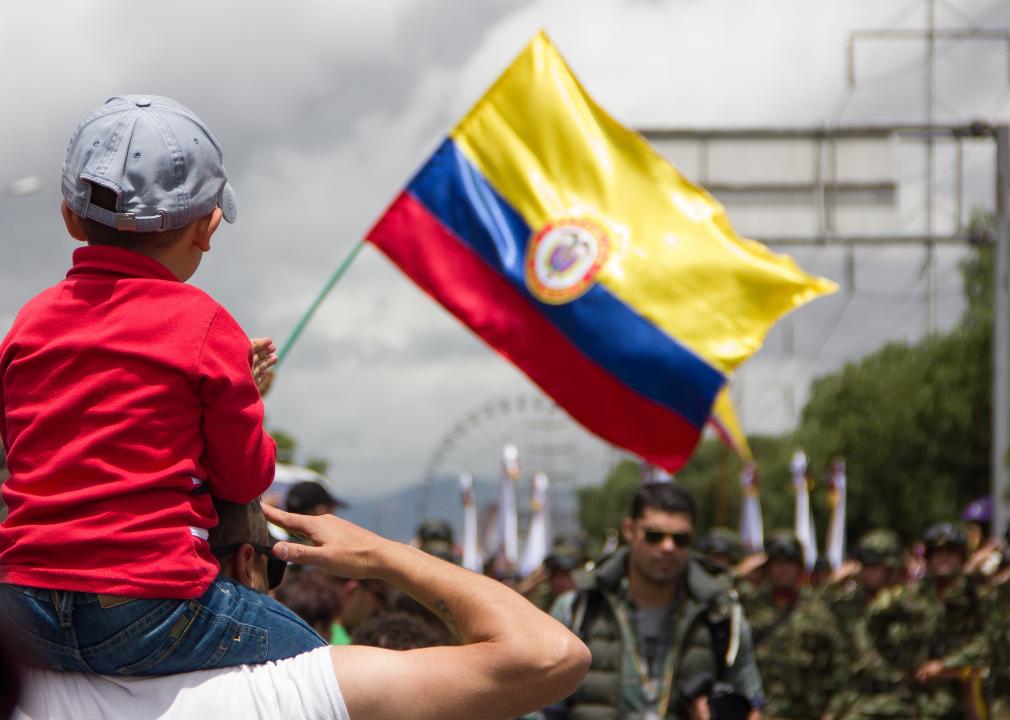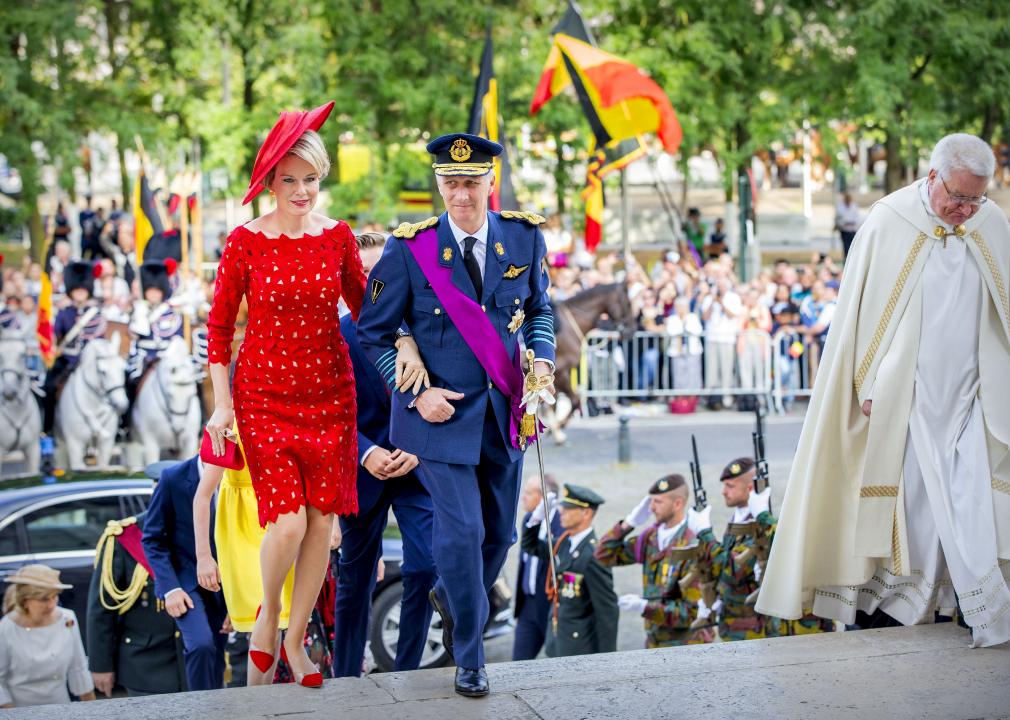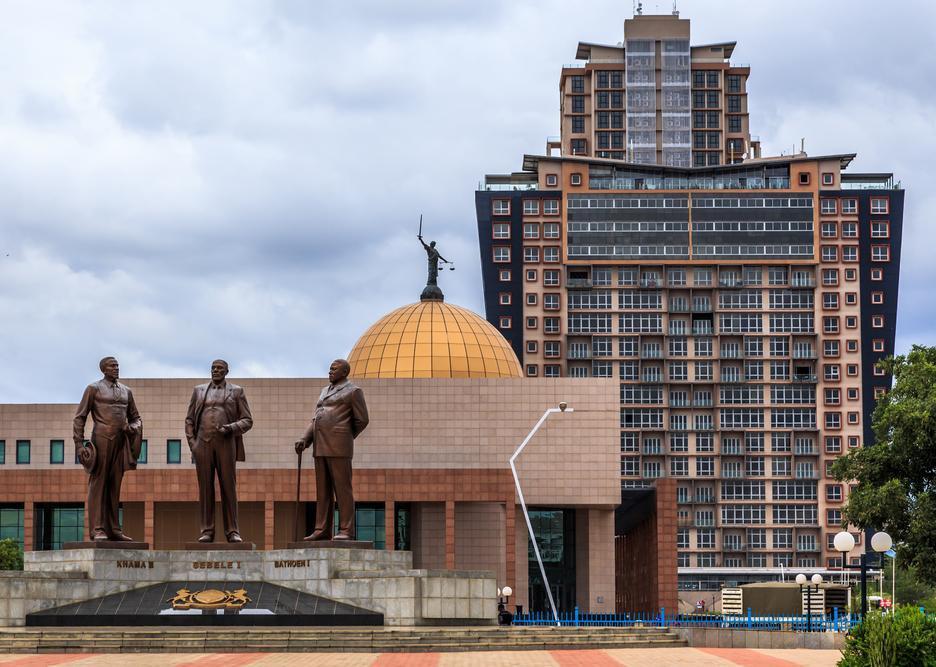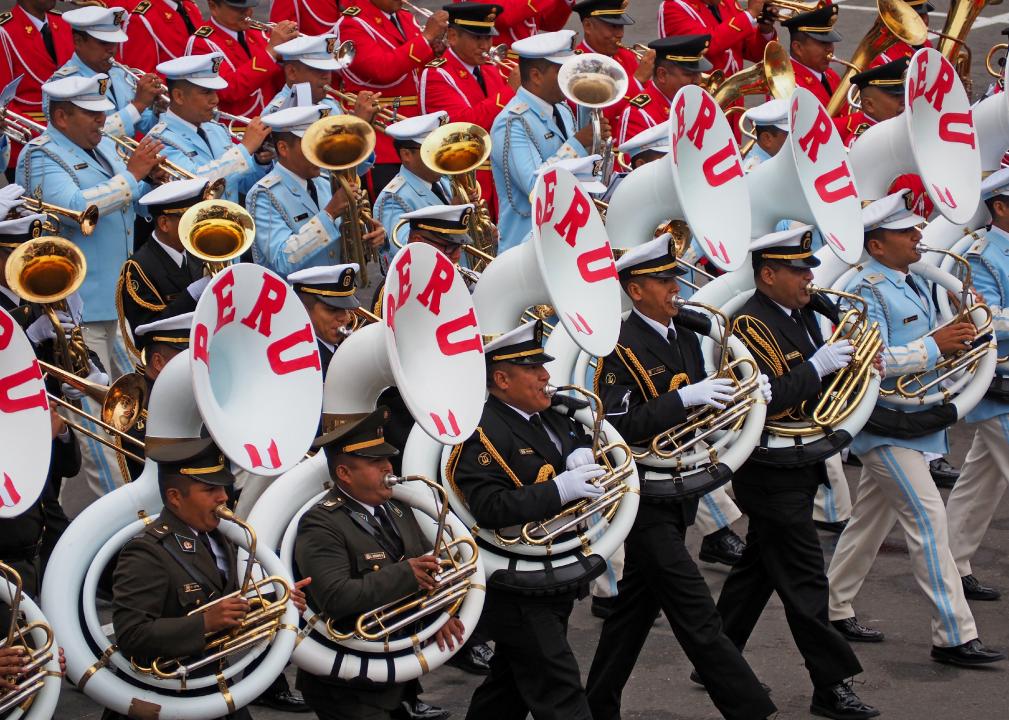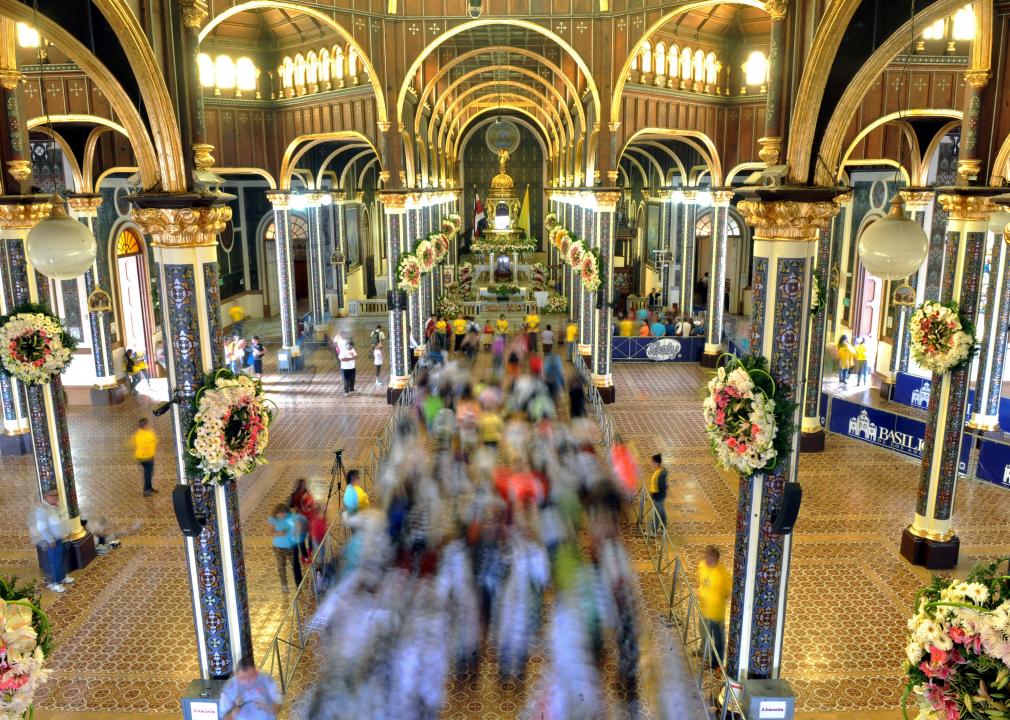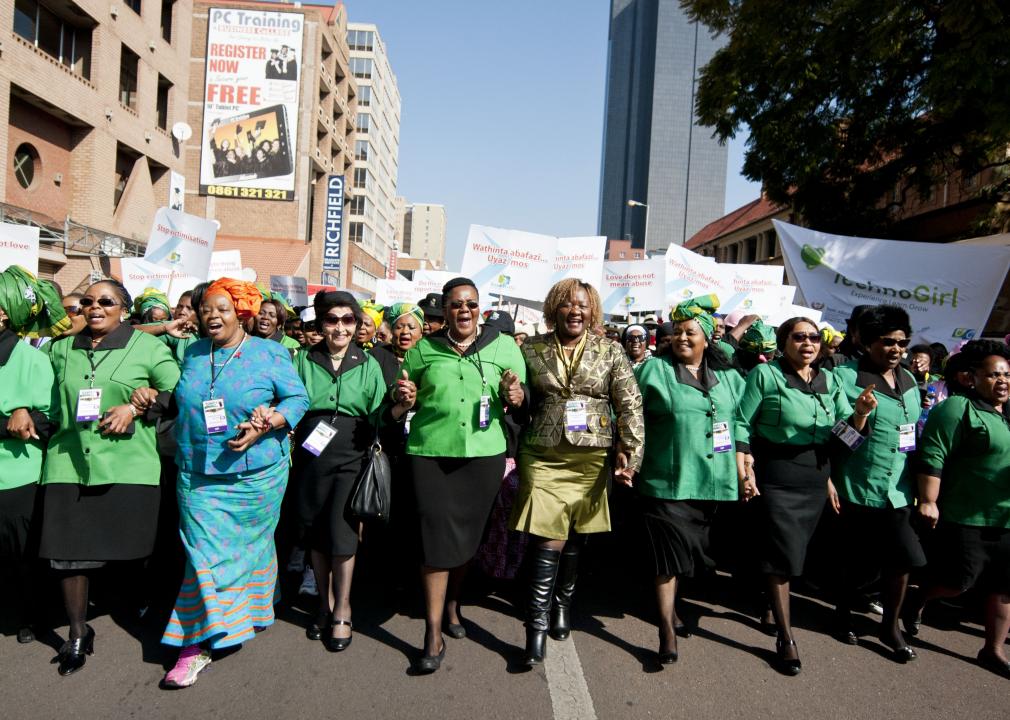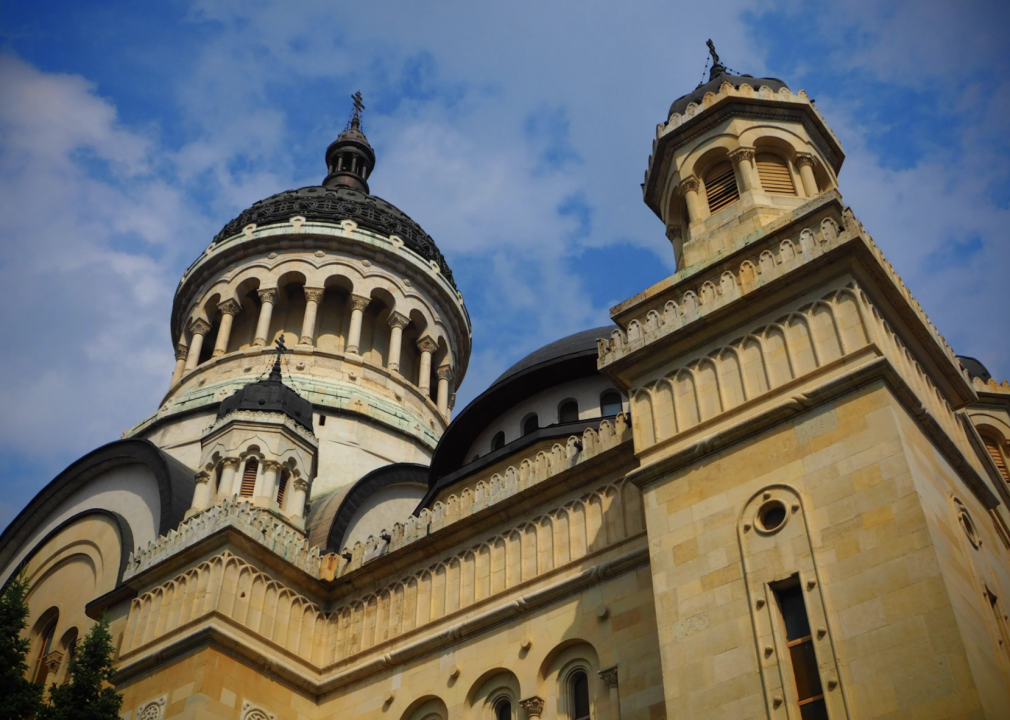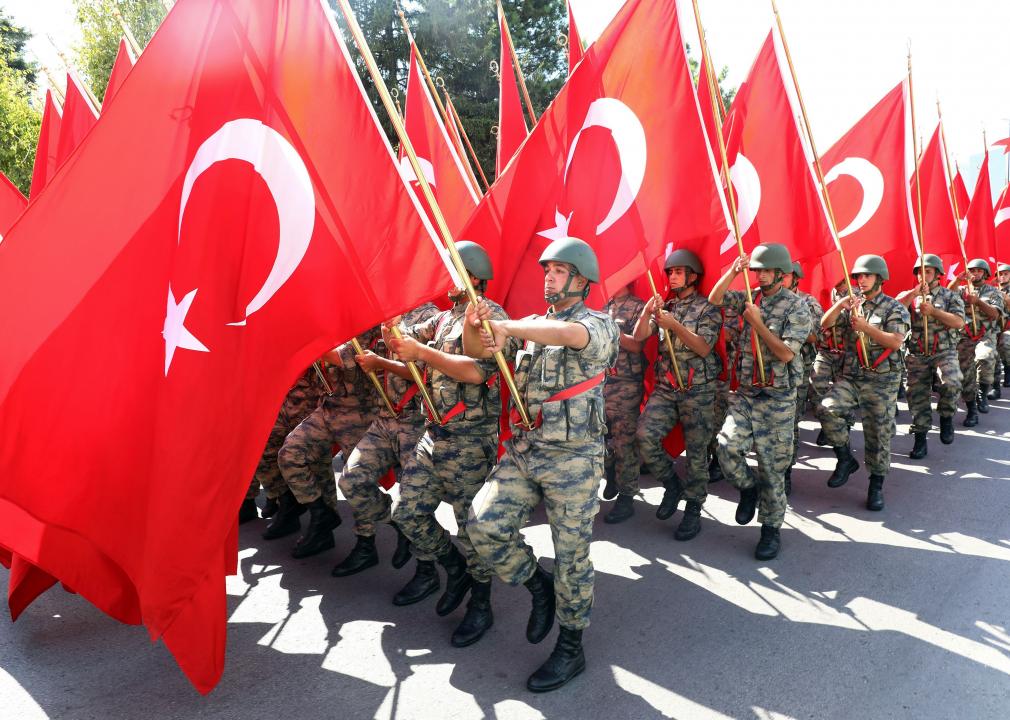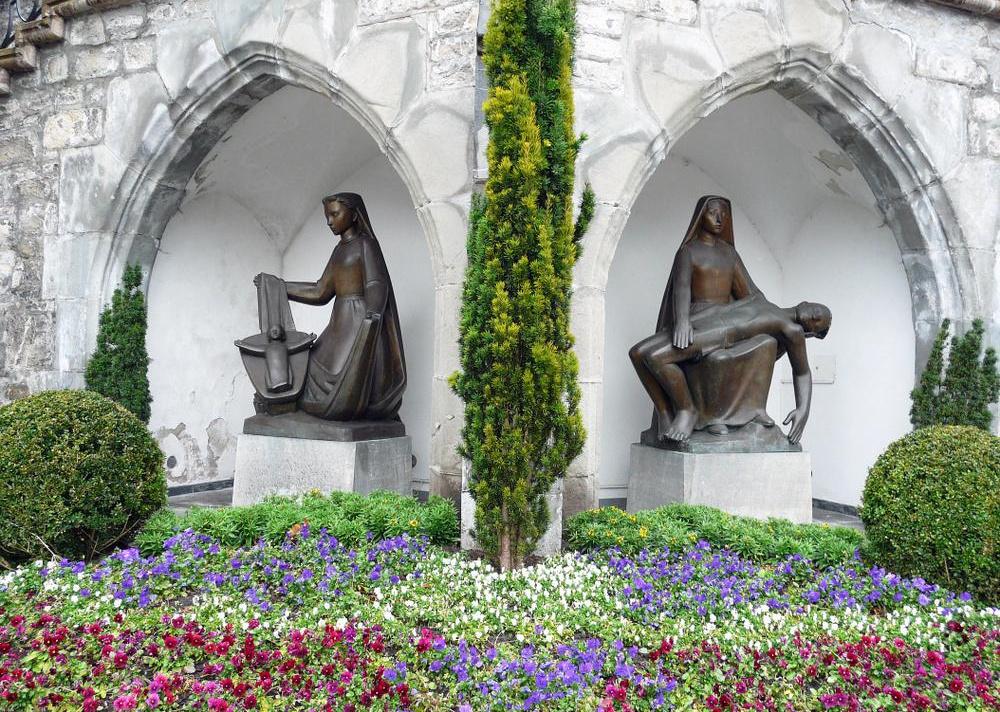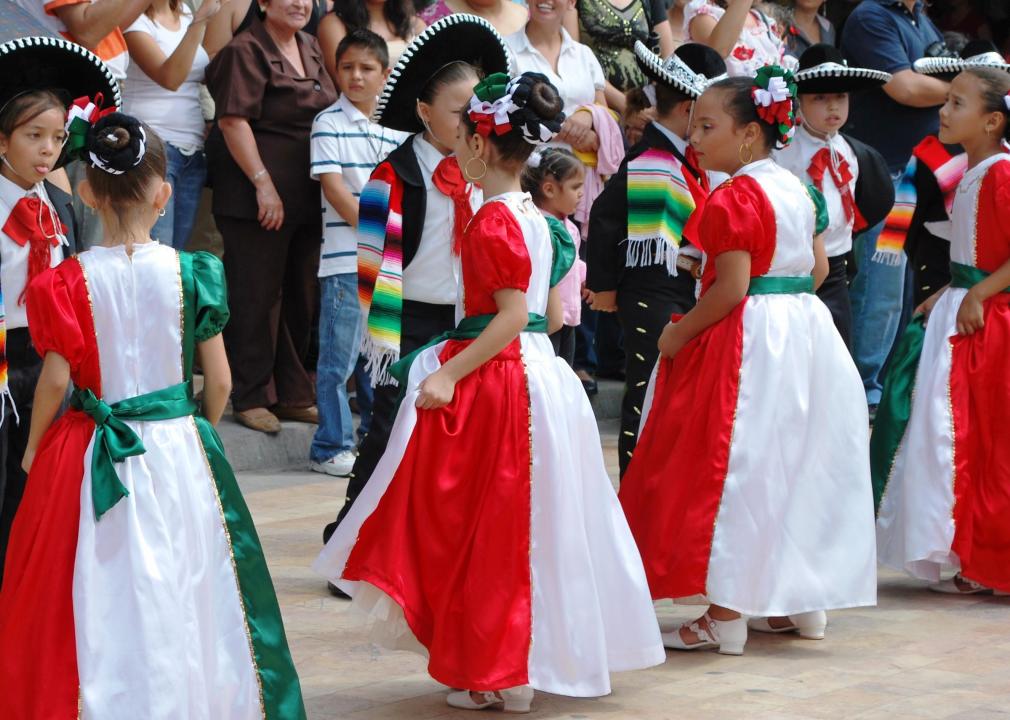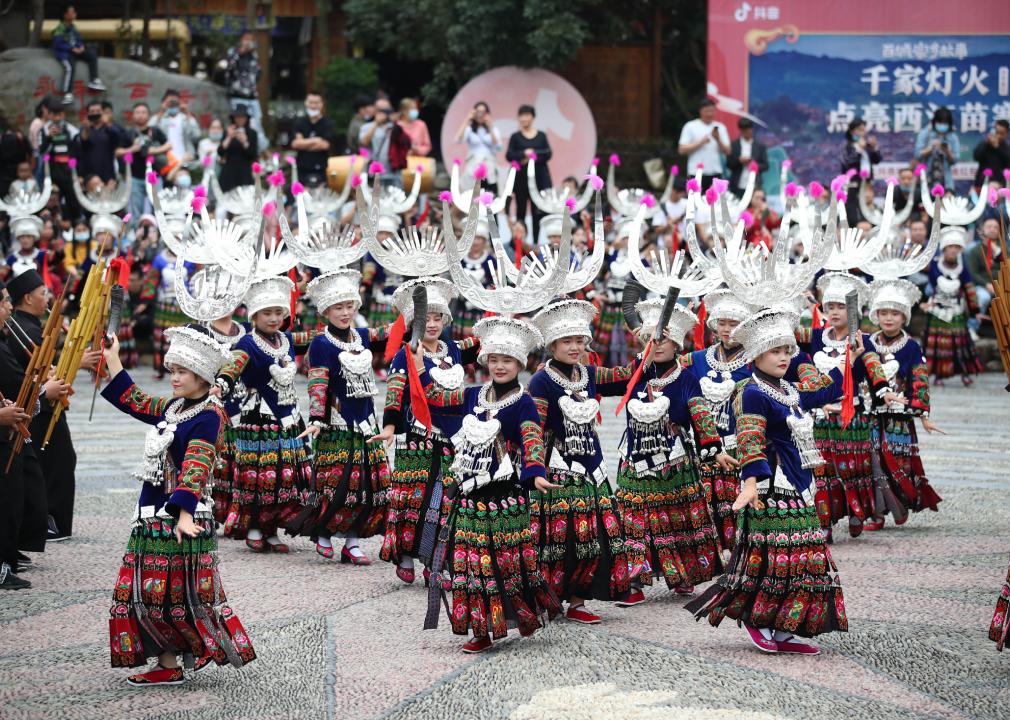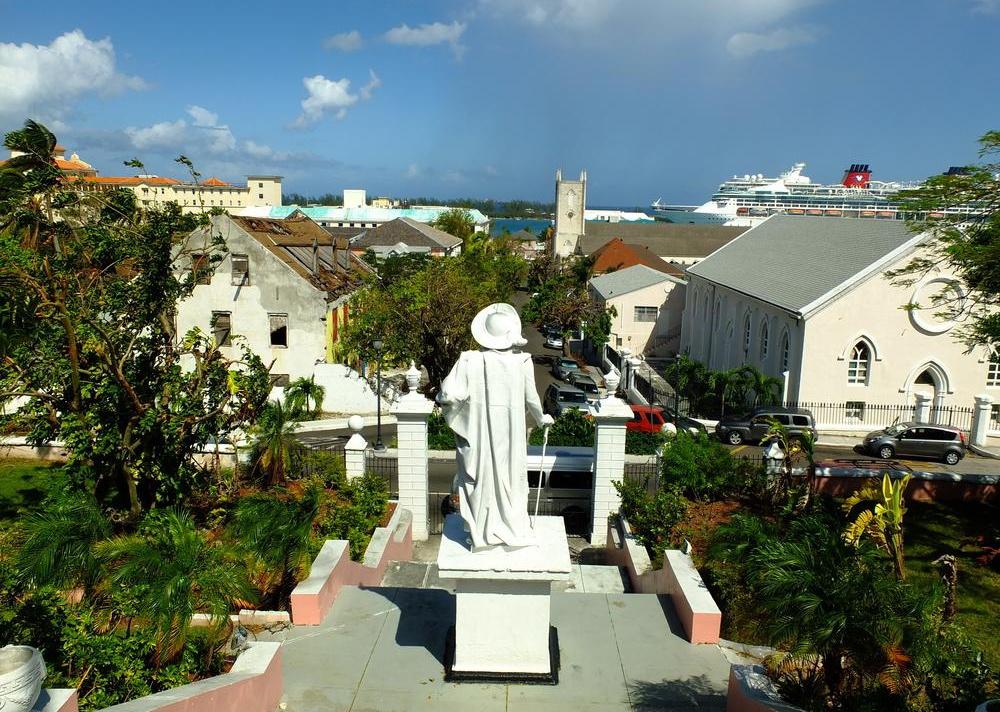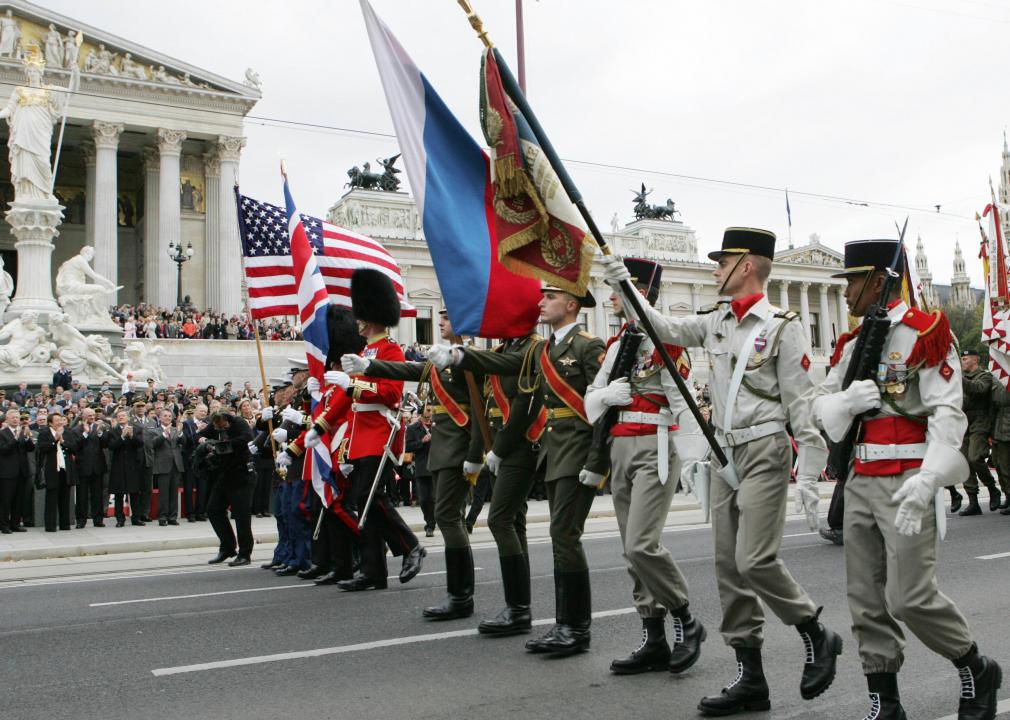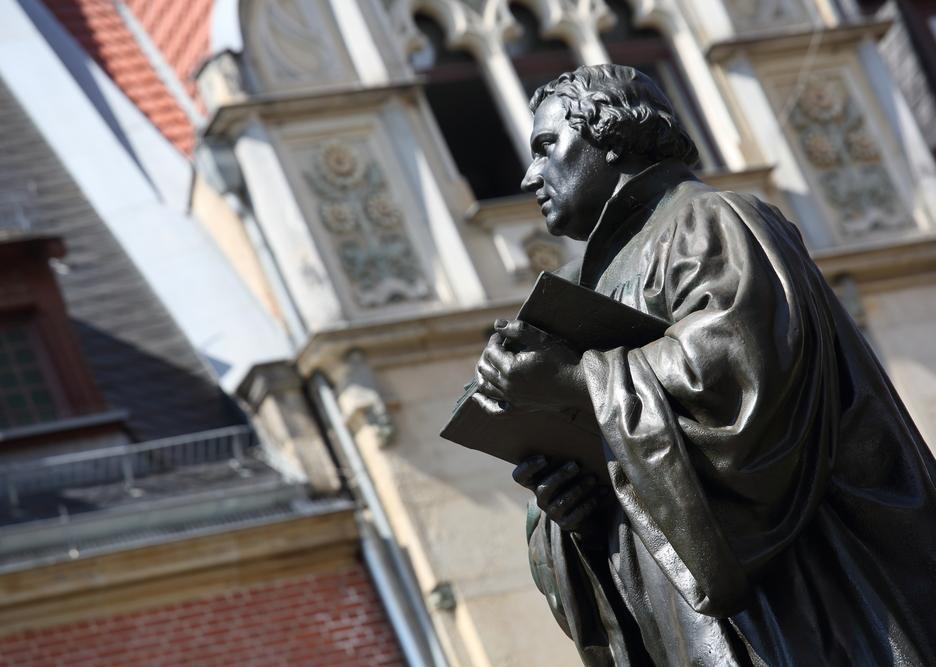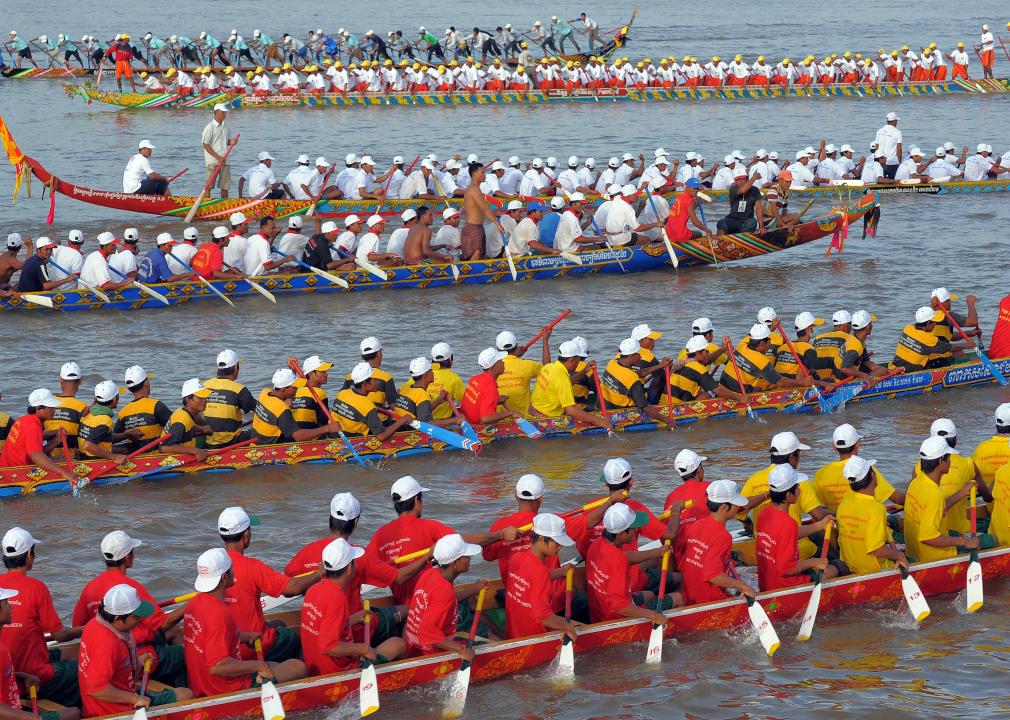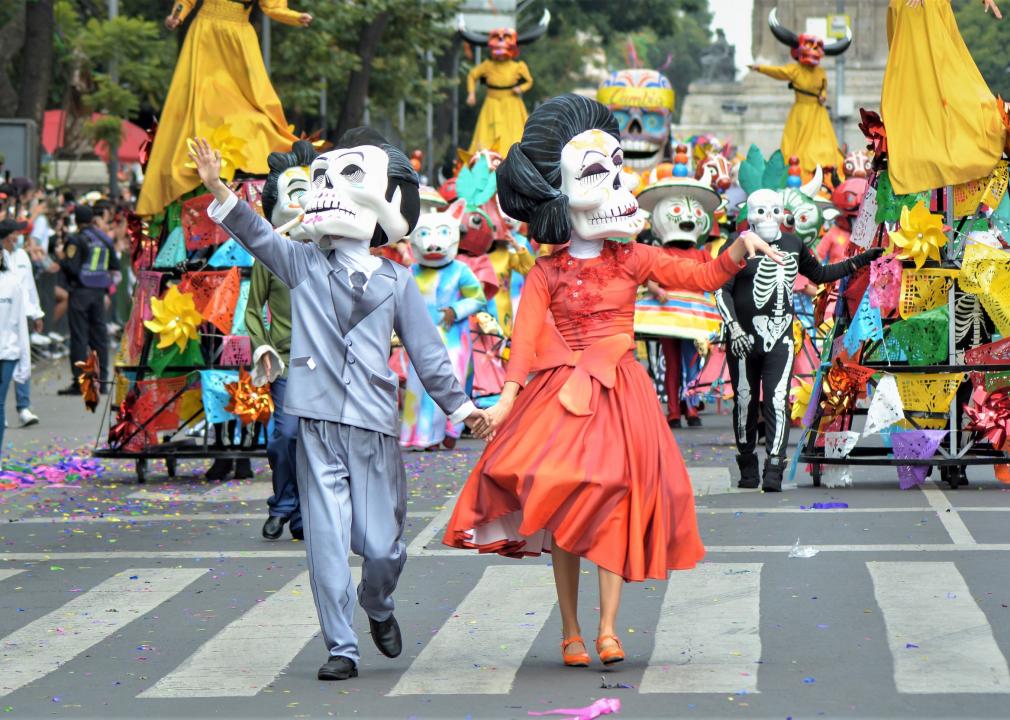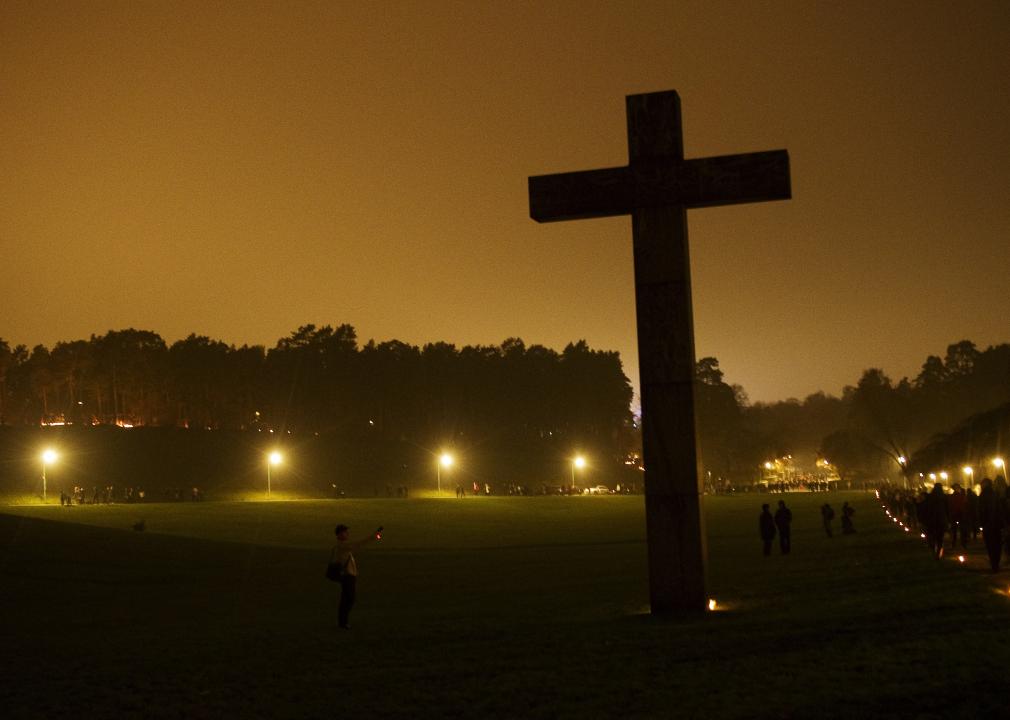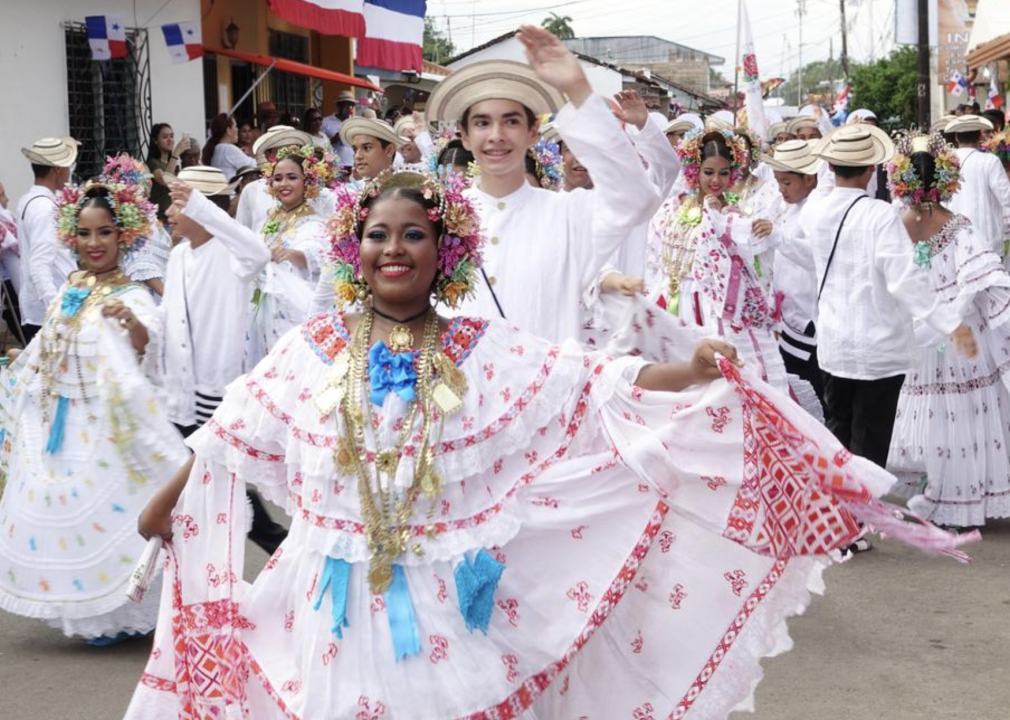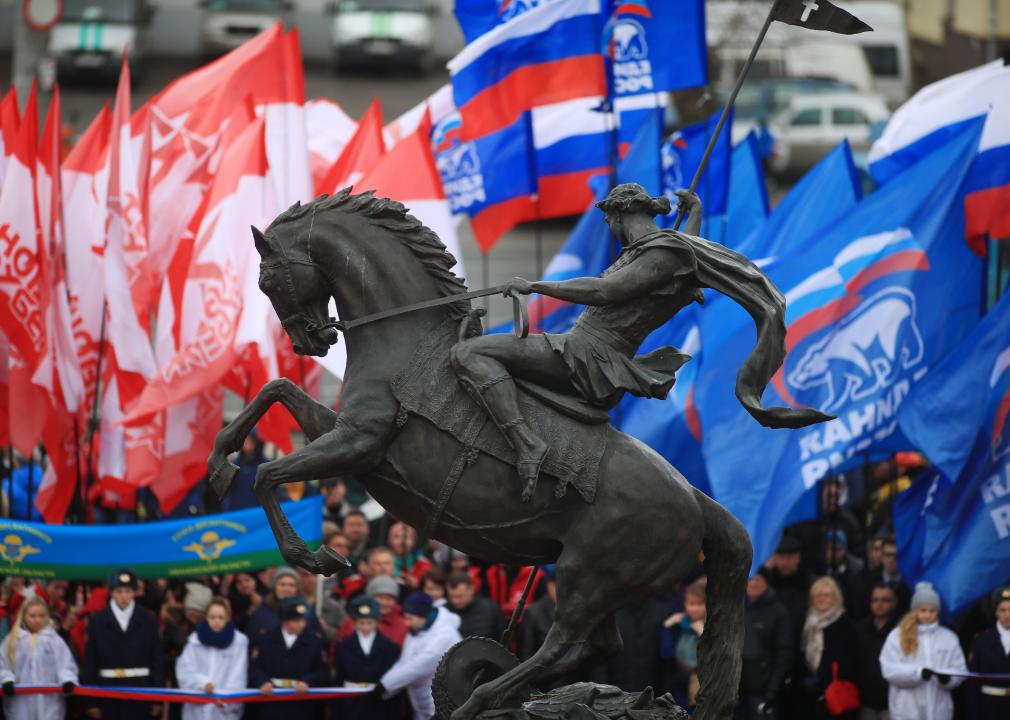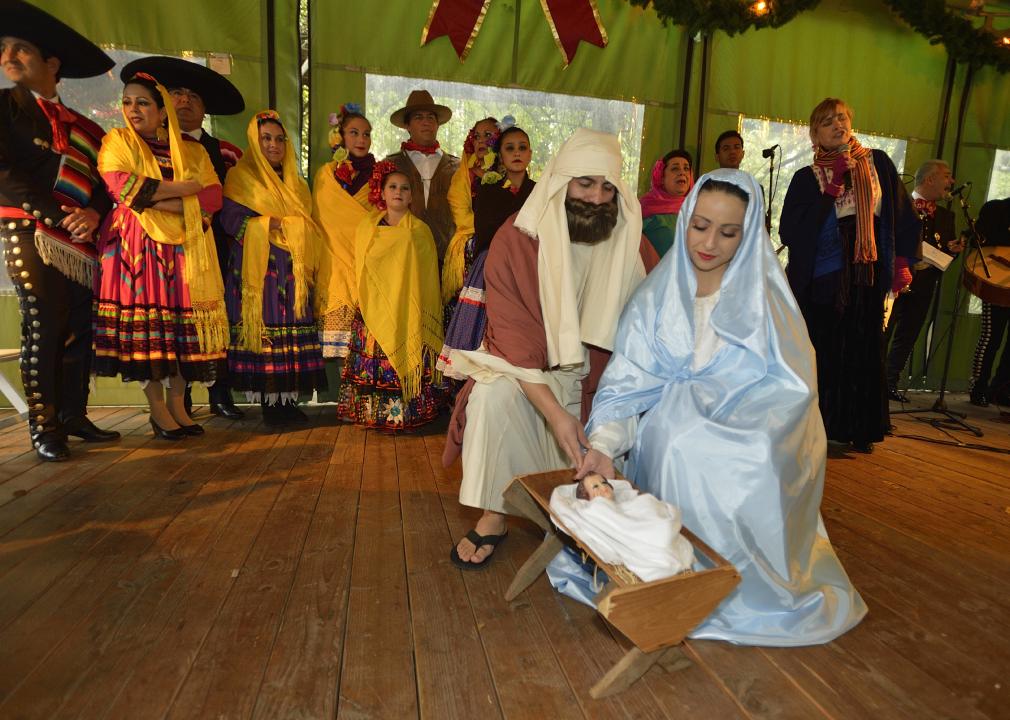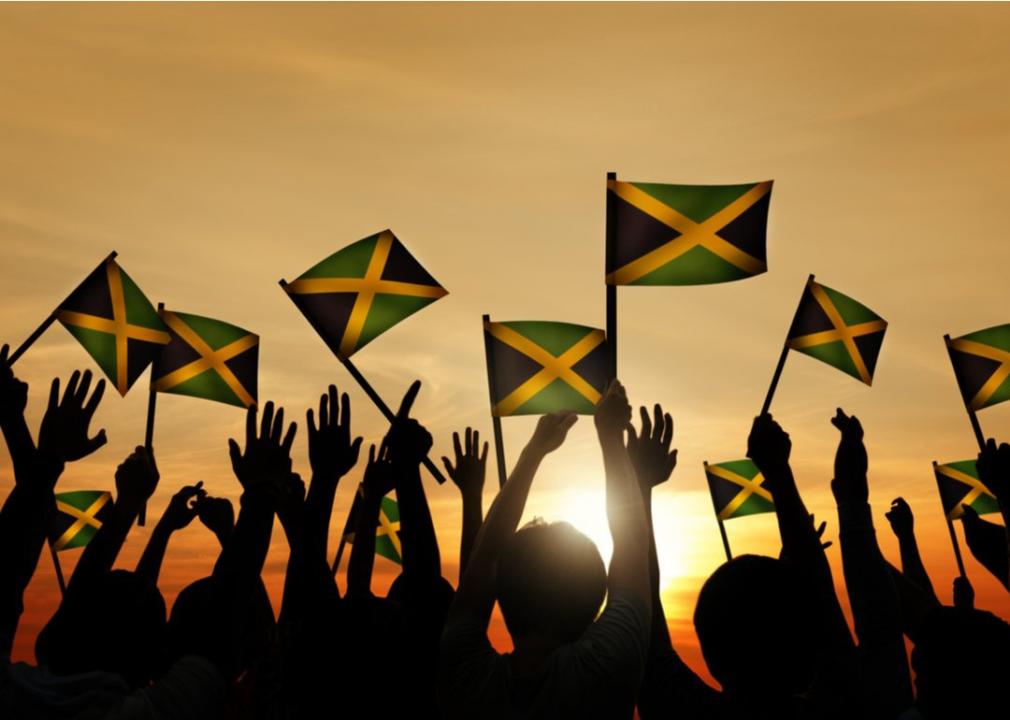Stories behind holidays around the world
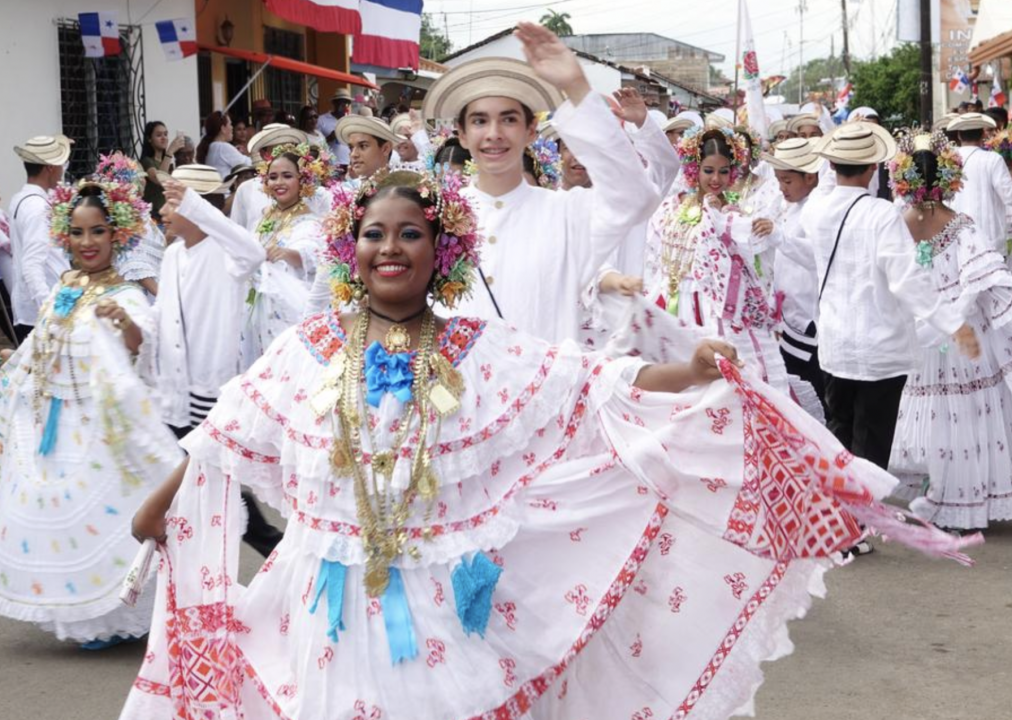
Gualberto Becerra // Shutterstock
Stories behind holidays around the world
The period between November to early January is well established as the holiday season in the U.S. Thanksgiving, Christmas, and New Year’s are a few of the most popular holidays in America, but there are so many other major holidays in various countries throughout the year that are a significant part of the cultural fabric.
Using a variety of sources, Stacker compiled a list of 50 holidays celebrated around the world. Continue reading to discover holidays you may have never heard of and learn about the their unique history and traditions.
You may also like: Influential artists of the 20th century
![]()
McKay Savage // Wikimedia Commons
Peru’s New Year
The start of the New Year is a period to honor change, to leave what is no longer working behind and start anew. In the Peruvian culture, celebrating this public holiday involves evenings of food and drink—especially pisco sours—by candlelight, fireworks, and many other unique traditions and customs. Some of these include placing one peeled, one partially peeled, and one untouched potato—a food important to Peruvian culture—under a chair in one’s home.
At the stroke of midnight, a potato is retrieved blindly and represents what life will bring in the future—the fully peeled potato symbolizes an unprosperous year, the partially peeled potato means an average year, and the skin-on potato indicates a year of prosperity and wealth. Another unique custom is the practice of dressing dolls in old clothes and burning them as a symbol of starting new.
You may also like: Famous works of art from 30 countries around the world
Roman Babakin // Shutterstock
Switzerland’s St. Berchtold’s Day
St. Berchtold’s Day, Jan. 2, is an Alemannic tradition celebrated in some areas of Switzerland. The holiday’s name comes from the word “berchten,” meaning “to walk around, asking for food.” On this day, folks exchange pleasantries and good wishes for the New Year.
drasa // Shutterstock
South America’s Dia de los Reyes Magos
Dia de los Reyes Magos—the Day of Kings—is celebrated in Argentina as well as many other South American countries on Jan. 5 and 6, and marks the end to the Christmas season. This centuries-old holiday commemorates the three kings, or Three Wise Men—Melchior, Caspar, and Balthazar—who journeyed to Bethlehem bearing gifts in celebration of baby Jesus. Children leave their shoes out on this night and put out water and grass for the kings’ camels. In the morning, children find gifts left in return.
Tony Anna Mingardi/Awakening // Getty Images
Italy’s Epiphany
On Jan. 6, Italians celebrate a national holiday known as Epiphany, paying tribute to La Befana. With roots in religion, Epiphany also commemorates the 12th day of Christmas when three wise men arrived at Baby Jesus’ manger with gifts.
In tandem with folktale of La Befana, the legend goes that on the night before the wise men arrived at the manger, they stopped at an old woman’s shack asking for directions. The woman, Befana, joined them on their journey giving out gifts that had belonged to her late child. Festivals and parades are also held all over the country to celebrate the national holiday.
You may also like: Antiracist works to broaden your perspective
Slick-o-bot // Wikimedia Commons
United States’ Martin Luther King Jr. Day
Martin Luther King Jr. championed the civil rights movement in America. His birthday is celebrated on the third Monday of January and is a federal holiday. The day features broadcasts of his many speeches as well as special community events and acts of service.
James D. Morgan // Getty Images
Australia Day
Jan. 26 is known as Australia Day, a public holiday celebrated each year on the day that Capt. Arthur Phillip and his First Fleet from Great Britain landed in Sydney Cove in 1788 and declared a new colony. In 1817, the continent was deemed Australia, and a year later, Australia Day was officially established as a public holiday. On this day, Aussies acknowledge their history and celebrate what it means to be Australian with festivals and fireworks, barbecues, awards ceremonies, parades, and flag-raising ceremonies, and hold an awards ceremony honoring selected citizens as “Australian of the Year.”
Feng Li // Getty Images
Chinese New Year
Chinese New Year is also called the Spring Festival and usually held in January or February, between Jan. 21 to Feb. 20 depending on the Chinese Lunar calendar. Each Chinese year has an animal sign according to the Chinese zodiac. Fireworks light up the sky in China around midnight on Chinese New Year and traditional performances can be viewed, including dragon dances and lion dances.
By Jersson Tello // Shutterstock
Bolivia’s Feast of the Virgin of Candelaria
Feast of the Virgin of Candelaria is celebrated on Feb. 2. People from all over the world make the pilgrimage to Lake Titicaca to honor the Patroness of Bolivia, Our Lady of Copacabana. For three days the people of this fishing village pray and party in the streets, celebrating the Virgin. There is music, dancing, and a combo of traditional Andean beliefs and Catholic tradition. Our Lady of Copacabana, also known as the Dark Virgin of the Lake, is revered in Bolivia for a series of miracles she is believed to have worked in the area.
Experiences to note include the blessing of new vehicles by priests with beer as well as the running of the bulls on the third day, in which locals do their best to avoid being gored by the 100 or so bulls stampeding along a Yampupata road.
Fiona Goodall // Getty Images
New Zealand’s Waitangi Day
Waitangi Day commemorates the signing of New Zealand’s founding document—the Treaty of Waitangi in 1840. Since 1974, the day has been celebrated on Feb. 6. Official celebrations are held at the Waitangi Treaty Grounds in the Bay of Islands, Northland, but there are also many other events throughout the country including Maori cultural performances, speeches from dignitaries, and a naval salute.
Foto011 // Shutterstock
Serbia’s Statehood Day
Statehood Day is celebrated on Feb. 15 and 16. The Serbian holiday memorializes the day in 1804 when the Ottoman Empire recognized the Serbian state. The holiday is typically spent with family and friends. Feb. 15, 1835, was also when the first Serbian Constitution was created.
You may also like: Popular children’s books published the year you were born
PAUL FAITH // Getty Images
Ireland’s St. Patrick’s Day
March 17 in Ireland is St. Patrick’s Day, though many other countries around the world acknowledge and celebrate the day. The date marks the day of St. Patrick’s death. The day is generally filled with drinking, parades, and other social events. Be mindful to wear green—the color of the Emerald Isle.
Valery Bareta // Shutterstock
Tunisia’s Youth Day
Tunisia celebrates Youth Day on March 21. The day brings cultural and musical festivities, which are usually organized by youth clubs and organizations, and members of the local government in major towns and cities. The Ministry of Youth, Sports, and Physical Education may hold public conferences dedicated to youth organizations with talks based on the government’s various initiatives.
You may also like: Famous moments in magazine history from the year you were born
milosk50 // Shutterstock
Madagascar’s Martyrs’ Day
Annually on March 29, martyrs are honored in Madagascar. Martyrs’ Day is a national holiday that pays homage to the heroism of those who fought and died in the 1947 Malagasy Uprising against French colonialism rulers. It was March 29, 1947, that Malagasy nationalists launched coordinated surprise attacks against French-owned plantations and military bases.
JACK GUEZ // Getty Images
Purim
Purim is a traditional Jewish holiday celebrated on the 14th of month of Adar on the Hebrew calendar—usually in March or April. The two-day celebration commemorates the salvation of the Jewish people by the Persian Queen Esther, from execution by the Haman—vizier to the Persian king—in the Achaemenid Persian Empire.
While the holiday is celebrated worldwide by Jews in the diaspora, Israel is where all of the action happens with spectacular parades, lively street parties, and elaborate festivals that often last all night. People enjoy triangle-shaped, fruit-filled pastries made to look like Haman’s tri-cornered hat, and send baskets of food and drink to family and the poor.
nooaonphoto // Shutterstock
Mozambique’s National Women’s Day
In honor of Josina Machel, Mozambique established National Women’s Day one year after Machel died from liver cancer in 1971. Machel played a significant role in the history of Mozambique during the Portuguese regime. She was among the volunteers designated to serve at the Liberation Front of Mozambique, or FRELIMO, to fight for national independence.
The official celebration held on April 7 is also a day to pay tribute to those involved in the campaign for human rights. On this day, the people of Mozambique gather across the country to hold programs and activities.
Manunuezp // Wikimedia Commons
Costa Rica’s Juan Santamaria Day
Juan Santamaria Day is a public holiday celebrated on April 11 that gives a nod to one of Costa Rica’s most famous national heroes, Juan Santamaria. The drummer boy helped Costa Rica defeat William Walker and the invading filibusters, confirming the country’s sovereignty. He died on April 11, 1856, during the Second Battle of Rivas. There are parades, civic programs, and fireworks throughout the country to show respect.
Antonina Tadeush // Shutterstock
Denmark’s Store Bedebag
The last Friday after the celebration of Easter Sunday, Denmark celebrates Store Bedebag, or Great Prayer Day. The date of the celebration varies. King Christian V of Denmark instituted the celebration to combine the festivity held by various small Christian religious affiliations in Denmark into one common holiday. The holiday began in Denmark in 1686.
There is a great deal of prayer and people typically eat traditional Danish bread called varme hveder, as well as walk along the famous parks of Copenhagen such as the Langelinie.
You may also like: 50 famous paintings and the stories behind them
LEVIN DEN BOER // Getty Images
Netherlands’ King’s Day
King’s Day is April 27 in the Netherlands. Locals pay homage to King Willem Alexander’s birthday with music, street parties, flea markets, and fairs. The King of the Netherlands travels through the country with his family. On the night before King’s Day, King’s Night is celebrated with music shows in the Hague and other cities, and the nation’s biggest flea market in Utrecht.
Lisa Mar // Shutterstock
Malta’s Notte Bianca
The celebration of Notte Bianca was first announced in 2006 by then-minister of tourism and culture, Francis Zammit Dimech. On April 30, the city’s capital of Valetta lights up and is a celebration of the people, culture, and arts. State palaces and museums open their doors to show off visual art exhibitions and theater performances, while the open-air streets and piazzas display some of the finest local and international musicians and dancers.
Cafes and restaurants remain open until late and the streets are also full of food stalls. Notte Bianca, at its core, is meant to broaden awareness of foreign and Maltese culture and art.
AFP // Getty Images
Ecuador’s celebration of the Battle of Pichincha
May 24, the anniversary of the Battle of Pichincha in 1822, is a national holiday in Ecuador. The battle was the last for Ecuador’s independence. The country marks the occasion with parades and festivals, and Ecuadorians deck themselves in native dress and enjoy traditional music and dances. Students march in school uniforms, and the student with the highest grade in their class carries the Ecuadorian flag leading the parade.
You may also like: Every US president’s and first lady’s official portraits
Finnbarr Webster // Getty Images
United Kingdom’s Spring Bank Holiday
Spring Bank Holiday—celebrated at the end of May or beginning of June—is mostly about having a day off work or school. It is a long weekend with which many plan short getaways, hang out with family and friends, work in their gardens, or just relax. In some parts of the United Kingdom, there are customs celebrating the holiday, such as one event in which people race down a notably steep hill in Gloucester, England, following after a large wheel of cheese.
SOPA Images // Getty Images
Poland’s Corpus Christi
Some holidays are solemn—such is the case of Corpus Christi, celebrated by the Catholic Church in Poland since 1247. It is on the eighth Thursday after Easter and is a public holiday where richly adorned altars appear around midday at the head of grand processions down the central streets of Poland’s cities and villages.
Corpus Christi is associated with the adoration of Christ in the form of the Host. In the 15th century, the celebration evolved into a folk holiday involving prayers for good weather, abundant harvest, and protection from natural disasters.
Doctor Carlos De Sanctis // Wikimedia Commons
Paraguay’s Chaco Armistice
The Chaco Armistice holiday in Paraguay is typically held on June 12. The holiday commemorates the fierce fight between Bolivia and Paraguay in the 1920s and 1930s. On Chaco Peace Day, as it is sometimes called, there are parades celebrating the bravery of Paraguay’s soldiers in defending the Chaco lands.
This holiday is also a time to remember the loss of life the war incurred, and to commit to seeking continued peace and cooperation between Paraguay and its neighboring countries.
You may also like: 50 classics from (almost) everyone’s high school reading list
Anadolu Agency // Getty Images
Iceland’s National Day
Reykjavik is livelier than ever on Icelandic National Day, which is held on June 17. Festivities include street theater, a concert, accordion ball, dances, circuses, vendors, sports performances, a vintage car show, and more. The action starts at church, though, with the chiming of all church bells in Reykjavik, followed by a mass at Domkirkjan Cathedral.
There is the Icelandic government’s National Day ceremony at Austurvöllur Square, followed by a parade from Austurvöllur to Suðurgata Cemetery, where the chairman of the city council lays a floral wreath on the grave of Jón Sigurðsson, who led the country’s independence movement in the 1800s.
ULF PALM // Getty Images
Scandinavia’s Midsummer Day
Yearly at the end of June, Scandinavia (Denmark, Finland, Iceland, Norway, and Sweden) celebrates the summer solstice—the longest day in their calendar year. The holiday is known as Midsummer Day or Midnight Sun in Iceland. Each country has its own variation of traditions and events, including lighting bonfires along the fjords in Norway and Denmark, decorating a spruce trunk into a najstang (aka a maypole) in Sweden, and festivals, parades, music, and more are held in Iceland.
AFP Contributor // Getty Images
France’s Bastille Day
Bastille Day is held on July 14 and is an important day on the French calendar: It is a celebration of all things French. There is musical performance, military and civilian parades, balls, dances, communal meals, and more. Bastille Day was a public holiday for the first time on July 14, 1880.
Jorge Barrios // Wikimedia Commons
Chile’s Feast of Our Lady of Mount Carmel
July 16 is an important day in Chile. Since 2007, the Feast of Our Lady of Mount Carmel has been a public holiday. Our Lady of Mount Carmel is one of the titles given to the Blessed Virgin Mary, as she is a patroness of the Carmelite Order.
The first Carmelites were Christian hermits who lived on Mount Carmel in the Holy Land at the close of the 12th century. They built a chapel dedicated to the Virgin Mary—present-day Carmelite Monastery in Haifa. The object of the feast is the special predilection of Mary for those who profess themselves her servants by wearing her scapular.
Pacific Press // Getty Images
Colombia’s Independence Day
Independence Day in Colombia is a national holiday held yearly on July 20 celebrating the uprising in the capital Bogotá against Spanish rule, which is seen as the start of Colombia’s road to independence. The occasion is a time of parades as well as fireworks, and dance and music festivals.
Politicians give speeches, flags are hoisted, and sporting events and cultural cuisine are enjoyed enthusiastically by the Colombian people. In areas around the world with sizeable Colombian and Latino populations—like London, San Francisco, Melbourne, and New York City, thousands flock to the streets in celebration.
Patrick van Katwijk // Getty Images
Belgium’s National Day
National Day for Belgium is held July 21. It is a festive time with a ball, a special mass, fireworks, parades, concerts, performances, and activities for children. The theme in 2018 was the centenary commemoration of the end of the First World War and the five-year reign of King Philippe.
You may also like: The most popular book the year you were born
Vadim Nefedoff // Shutterstock
Botswana’s President’s Day
President’s Day in Botswana is the third Monday of July each year. The holiday is all about acknowledging the nation’s current and past presidents. Festivities include a military parade, festivals, music, fashion, sports, and dances that reflect Botswana’s culture and traditions. It is also popular on this day to go back to one’s home village to hear speeches, and enjoy local and cultural dances and songs.
Fotoholica Press // Getty Images
Peru’s Independence Day
Fiestas Patrias, Independence Day in Peru, begins on the actual day of liberation, which occurred on July 28, and carries into the following day. From the start of July, Peruvian flags can be seen everywhere. Peruvians also hold parties, performances of folk and Creole music are performed in public squares and parks, and the president gives a national message. The morning of the 28th is met with a 21-cannon salute and flag-raising ceremony. On July 29, at the close of the holiday, there is a parade and many agricultural fairs are held around the country.
AFP // Getty Images
Costa Rica’s Virgin of Los Angeles
Few holidays in Costa Rica are as big of a deal as the Virgin of Los Angeles on Aug. 2, which celebrates the nation’s patron saint. Visitors flock to the Basilica Virgen de Los Angeles in Cartago to see the statue La Negrita and to drink from the nearby stream, which is believed to have healing powers. People pray there and throughout the country, and there are also feasts and fairs.
Gallo Images // Getty Images
South Africa’s National Women’s Day
In 1994, South Africa began celebrating National Women’s Day—a public holiday held on Aug. 9. It commemorates the 20,000-women march in 1956 that protested new apartheid laws requiring Black people to carry a domestic passport. This mandate was meant to maintain segregation and control migrant labor and urbanization. On this holiday, the march is reenacted, there are speeches about women’s issues, fundraisers and viewing parties are held, and tours of the Union Buildings in Pretoria that protesters marched toward are given.
Ștefan Jurcă // Wikimedia Commons
Romania’s Dormition of the Theotokos
Aug. 15 is a significant day in Romania. It is the Dormition of the Theotokos—a national holiday celebrating the Christian belief that God assumed the Virgin Mary into Heaven following her death. This feast day is one of the most important in the Orthodox Christian calendar.
Large crowds form processions and pilgrimages involving thousands of Romanians in places like Moisei in Maramureș, Nicula, in Transylvania, and Putna in Moldova. St. Mary is the patron saint of the Navy, so the holiday corresponds with the Day of the Romanian Naval Forces, also known as Navy Day. Events, such as demonstrative shows featuring navy ships, are held in port cities and often attract thousands of visitors.
ADEM ALTAN // Getty Images
Turkey’s Victory Day
Aug. 30 in Turkey is Victory Day—also called Armed Forces Day, a time when Turkey recognizes its triumph in the Battle of Dumlupınar—the decisive battle in the Turkish War of Independence in 1922. The holiday also honors the founder of modern Turkey, Mustafa Kemal Atatürk.
The defeat was first celebrated in 1923 and became a national holiday in 1935. A ceremony is also held at the War Academy in Istanbul. The military uses that day to promote its finest performers, and marches are held across the country.
Kumpel // Shutterstock
Liechtenstein’s Our Lady of Nativity
Sept. 8 is the national holiday of Our Lady of Nativity in Liechtenstein. The Feast of the Nativity of the Blessed Virgin Mary is believed to have been celebrated as early as the sixth century.
While the Nativity of the Blessed Virgin Mary is not celebrated today with the same solemnity as the Immaculate Conception, it is still important as it prepares the way for the birth of Christ. The people of Liechtenstein feast on food and drink on that day, especially Mother’s Cake. There are religious readings throughout the day in churches as well.
AlejandroLinaresGarcia // Wikimedia Commons
Mexico’s Independence Day
Beginning on the evening of Sept. 15 and carrying into the next day, Mexico celebrates its independence from Spain, which it gained in 1810. This holiday, which is often confused with Cinco de Mayo, is also known as el dieciséis de Septiembre or El Grito de Dolores—the battle cry of Mexico’s independence—and is celebrated with fireworks, flag displays, civic ceremonies, food, and parades. On the evening of Sept. 15, local politicians reenact the independence cry in public squares all across Mexico.
You may also like: 100 of the best thriller novels of all time
China News Service // Getty Images
China
After Chinese New Year, the second most significant holiday in China is the Mid-Autumn Festival, held in September or October, depending on the Chinese Lunar calendar. The festival is a time for families to come together when the moon is believed to be at its fullest, which gives the festival its other names as the Moon Festival or Mooncake Festival.
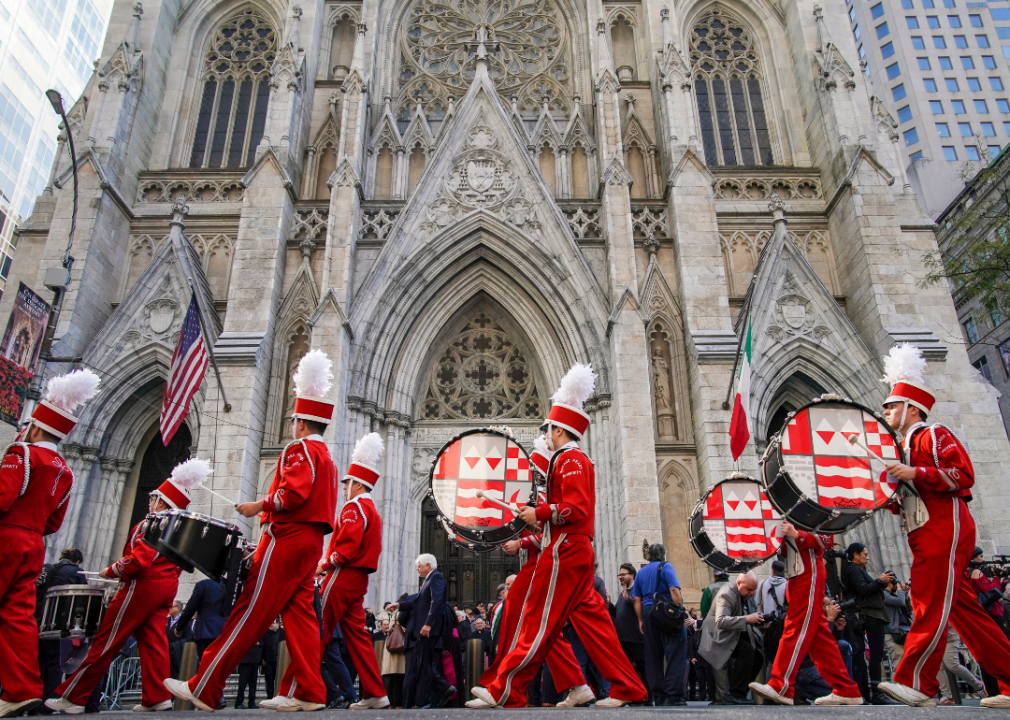
Drew Angerer // Getty Images
United States’ Columbus Day
In grade school, many Americans may have learned the lyrics, “In 1492, Columbus sailed the ocean blue.” Columbus’ voyage included landing in the United States in 1498. Columbus Day, the second Monday of October, has been a federal holiday since 1937, but celebrations can be tracked back to 1972.
In more recent times, there has been pushback against the holiday, as many see Columbus as a colonizer of Indigenous people rather than a discoverer of a new world. Some places across the U.S. now recognize Indigenous Peoples Day in place of Columbus Day.
Robert Szymanski // Shutterstock
Bahamas’ National Heroes Day
In the Bahamas, giving honor where honor is due is a huge piece of the country’s culture. The second Monday in October—formerly known as Discovery Day or Columbus Day—is dedicated to honoring Bahamian national heroes since 2013.
An official National Heroes Day ceremony is held with a keynote speech by the prime minister, and heroes from a cross-section of civil society are celebrated with a week of activities. The day also includes family gatherings and picnics at the beach.
DIETER NAGL // Getty Images
Austria’s National Day
National Day in Austria relates to political developments after World War II. On Oct. 26, 1955, the Austrian Parliament passed the constitutional law on permanent neutrality, which has been celebrated as the Austrian National day since 1965. Every year, the government celebrates this day with a series of events in Vienna.
Events include the celebration at Heldenplatz attended by the president and minister of defense, the laying of a wreath at the tomb of the Unknown Soldier at Burgtor, and the televised president’s speech in the style of the State of the Union address in the U.S. Residents can visit federal museums for free or at a discount on that day, and Austrian Embassies around the world celebrate by hosting events for Austrian citizens.
lonndubh // Shutterstock
Germany’s Reformation Day
While in some countries, Oct. 31 is about ghosts and ghouls, in Germany it is known as Reformation Day. It commemorates the day in 1517 when the proposals of German monk and theologian Martin Luther were nailed on the doors of a church. This event was the start of religious and social changes in Europe.
Many members of the Lutheran and some Reformed Churches attend special church services to mark the anniversary of Martin Luther’s proclamation. Other Germans who do not recognize the holiday or are not religious simply take the day to relax, and enjoy time with family and friends.
TANG CHHIN SOTHY // Getty Images
Cambodia’s Bon Om Touk
In Cambodia, one of the largest and most celebrated annual holidays is Bon Om Touk (Cambodian Water Festival). It takes place over three days starting on the full moon of the Buddhist month Kadeuk (in November) and marks the end of the rainy season. The festival has been held for centuries, recorded in etchings on the walls of the Bayon and Banteay Chhmar temples.
Millions flock to the capital, Phnom Penh, for the celebrations including boat races along the Tonle Sap River, festivals, parades, fireworks, concerts, and more. The main occurrence for the holiday is one brought about by Mother Nature herself—the reversing flow of the Tonle Sap and Mekong Rivers.
Medios y Media // Getty Images
Mexico’s El Día de los Muertos
Starting on the eve of Nov. 1 and carrying into Nov. 2, in Mexico and some other Central American countries, people begin celebrations for El Día de los Muertos—Day of the Dead. This holiday celebrates the lives of loved ones who have died and is founded in the belief that the souls of children visit their families on the first day of the celebration and those of adults on Nov. 2.
Altars or ofrendas are common, and they’re decorated with papel picado, fruits, pan de muerto—bread, flowers of cempasúchil, and photos of the deceased ones. Depending on the region, people also bring food and play music at cemeteries. El Día de los Muertos has its roots in Aztec tradition some 3,000 years ago, but started in Mexico in the 16th century.
JONATHAN NACKSTRAND // Getty Images
Sweden’s All Saints’ Day
In Sweden on Nov. 1, All Saints’ Day, one will find lit candles and lanterns, flowers, and wreaths on graves as displays of love for those no longer with us. The holiday has origins from 731 A.D., when Nov. 1 was designated as a day of remembrance for saints of the church who had no days of their own.
From the 11th century, Nov. 2 was dedicated to all who are deceased regardless of standing and was called All Souls’ Day. By the 1900s, people began putting lighted candles on graves on All Saints’ Day.
Gualberto Becerra // Shutterstock
Panama’s Separation Day
Nov. 3 recalls success for the people of Panama: On Nov. 3, 1903, with the help of the United States, Panama broke away from Colombia. This is a point of pride that is celebrated as Separation Day via fireworks and parades.
Vladimir Smirnov // Getty Images
Russia’s Unity Day
Russia celebrates Unity Day on Nov. 4. The holiday recognizes the uprising that expelled Polish occupation forces from Moscow in 1612 and more generally the end of challenges like the Polish-Muscovite War (1605–1618).
beeboys // Shutterstock
Japan’s Shichi-Go-San
Shichi-Go-San—Seven-Five-Three—is one of the most important cultural holidays in Japan. It is a rite-of-passage celebrating the well-being and growth of 3- and 7-year-old girls and 3- and 5-year-old boys. The celebration is held every year on Nov. 15 and involves children dressing in traditional kimonos, visiting shrines, and praying for good fortune in the future.
Parents take their children to the shrine of their guardian deity to offer thanks and ask for blessings. The holiday has been around since ancient times, but is often tied back to the late 1600s and early 1700s when ruler Shogun Tokugawa Tsunayoshi celebrated the health of his 3-year-old son.
MediaNews Group/Orange County Register // Getty Images
Mexico’s Los Posadas
Los Posadas—The Inns—is a nine-day religious festival beginning Dec. 16 and ending on the 24th. The holiday is celebrated in Mexico and some areas of the United States. It commemorates Mary and Joseph’s trek from Nazareth to Bethlehem, and the birth of Jesus. People invite their families and friends to a celebration where they reenact the journey of Mary and Joseph, enjoying refreshments, singing carols, and reading scripture. Mass follows each day of the holiday and afterward children break open candy-, toy-, and money-filled piñatas.
Rawpixel // Shutterstock
Jamaica’s Boxing Day
In Jamaica—and other countries around the world, locals celebrate Boxing Day on Dec. 26. Despite the name, the holiday has nothing to do with anybody getting in the ring. One theory is that the name has to do with the day-after Christmas ritual of people tossing empty boxes from their presents. The exact origin of the meaning of Boxing Day is unknown, though some say the tradition dates back to England in the Middle Ages.
You may also like: Can you solve these real ‘Jeopardy!’ clues about art?
